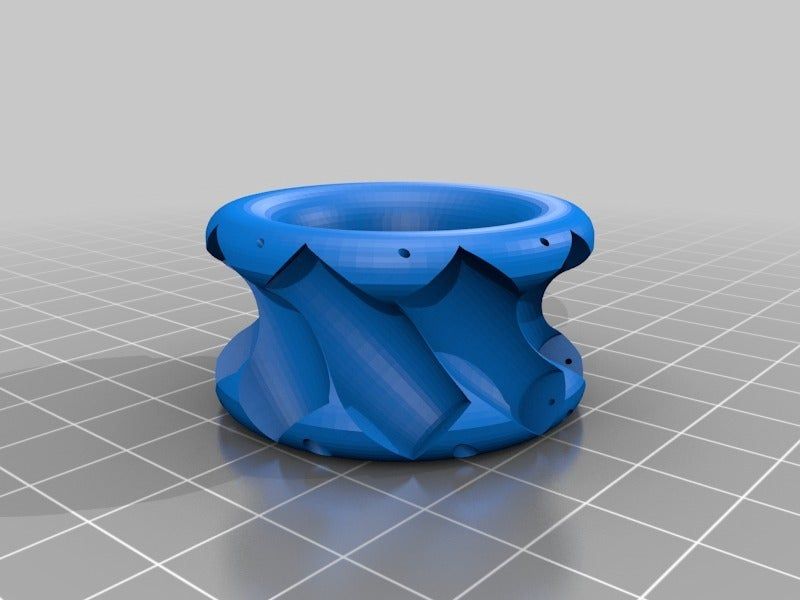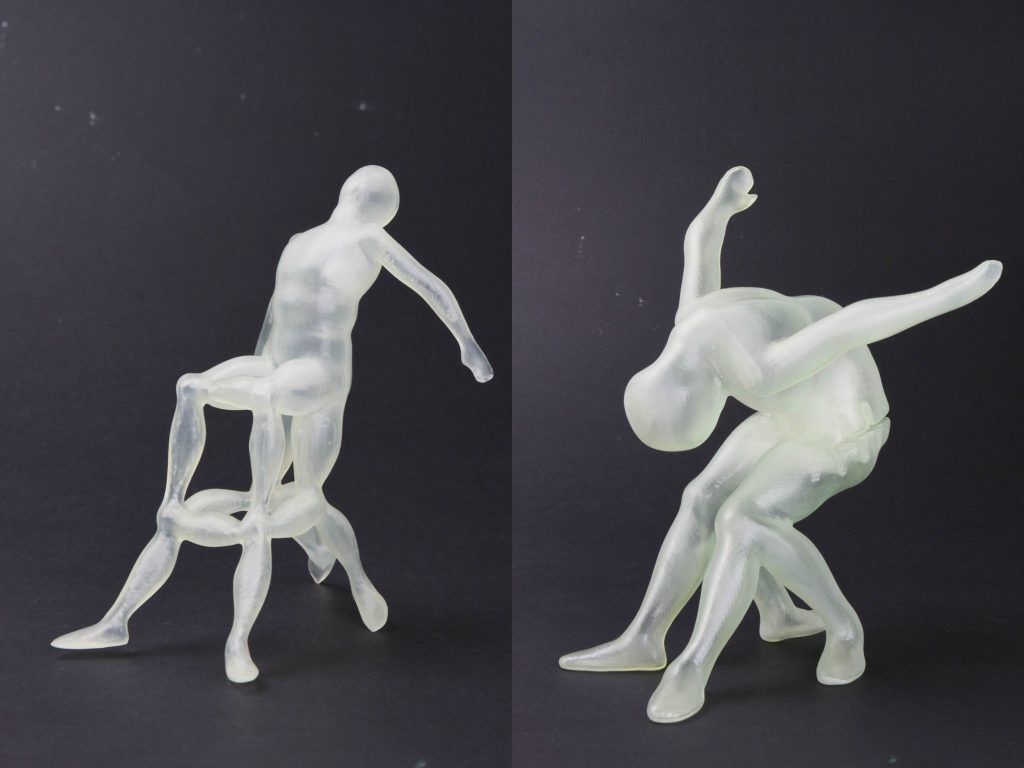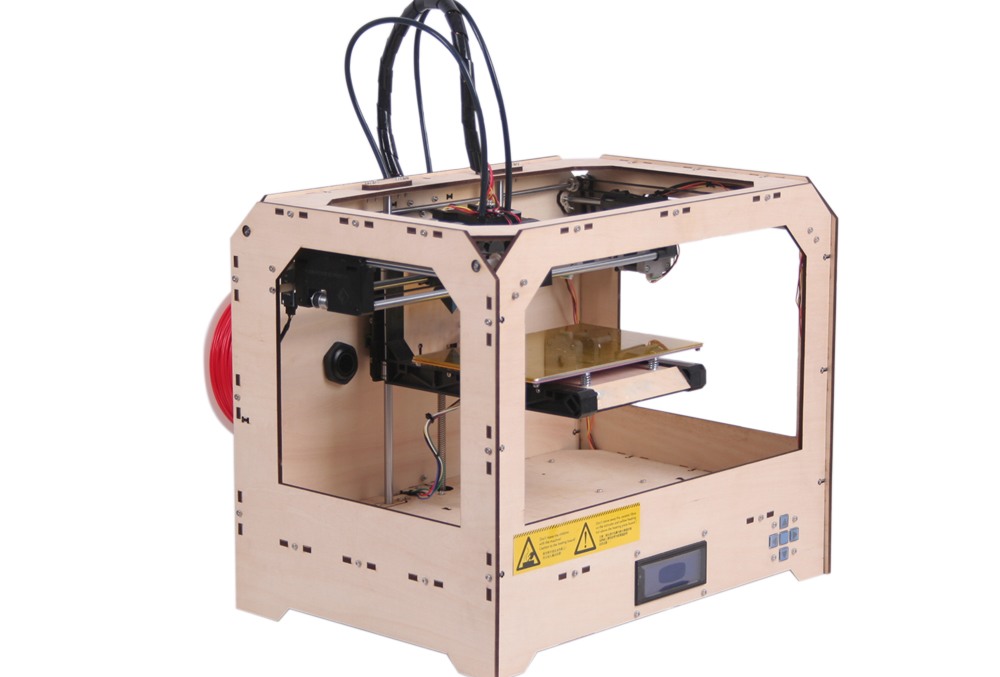3D laser scanner cost
Best handheld 3D scanners under $30K
Looking for the best handheld 3D scanner? This selection features what we believe are the 6 best handheld 3D scanners under $30,000, based on our own experience as well as feedback from our trusted network.
Last update April 27, 2022
In our last major update, we swapped out the Scantech KSCAN-Magic for the SIMSCAN that we tested weeks earlier. We also added the FreeScan UE Pro, Shining 3D's recent follow-up to the metrology-grade FreeScan X series. We swapped out the Go!SCAN SPARK for the HandySCAN 307 to narrow this selection's price range down to $30K. Minor updates were also made to the buying guide section.
Table of contents
What is the best handheld 3D scanner on the market?
Our handheld 3D scanner selection this year (under $30K)
peel 2
EinScan HX
HandySCAN 307 (SILVER series)
FreeScan UE Pro
SIMSCAN
Leo
Purpose: What do you need your 3D scanner for?
Handheld 3D scanner specifications
Budget
FAQ
What is the best handheld 3D scanner on the market?
There are hundreds of 3D scanners available on the market, from desktop 3D scanners to advanced 3D metrology systems. However, handheld 3D scanners have been gaining a lot of popularity over the past few years.
There are several key tendencies that may be behind this segment’s growth. Over the years, we’ve noticed that handheld 3D scanners and their software (which is often the most complex part of the process) are becoming much easier to use, with smoother workflows and improved design and ergonomics. New entrants – mostly from Asia– have driven prices down to overcome some of the market’s entry barriers, all while providing quality hardware and performance.
More generally speaking, handheld 3D scanners offer various benefits over other types of 3D scanners:
- Ability to access hard-to-reach places
- Relative ease of use
- Portability
Their versatility makes them suitable for a wide range of industries, including automobile, aerospace, engineering, and design, and some can even be used for 3D body scanning.
From affordable handheld 3D scanners to advanced, industrial-grade portable 3D scanners, the market caters to almost every need. Our goal is to showcase the best handheld 3D scanners currently available for professionals for under $30,000.
This buyer’s guide is based on a combination of our own experience, in-house 3D scanner reviews, and feedback from our partners.
Note: Not sure if handheld 3D scanning is the right fit for your use case? Take a step back and learn about other types of 3D capture solutions (metrology-grade solutions, jewelry 3D scanners, dental …) in our all-round 3D scanner buyer’s guide.
Our handheld 3D scanner selection this year (under $30K)
The table below recaps our selection of some of the best handheld 3D scanning options. The goal is to provide a quick, visual overview of the market; there are of course numerous other factors to take into account (certifications, software, customer service, …) to get the full picture for each solution and eventually make the right choice.
| Brand | Product | Accuracy | Country | Price Approximate starting prices based on supplier-provided information and public data. Prices may vary by region, over time and do not include additional products or services (taxes, shipping, accessories, training, installation, …). | |
|---|---|---|---|---|---|
| peel 3D This brand is a certified partner from our network. | peel 2 | 0.1 mm0.003937 in | Canada | $ 8,0908 090 €7,297 £1,176,003 ¥ | Quote |
| Shining 3D This brand is a certified partner from our network. | EinScan HX This product has been reviewed by our team. | 0.04 mm0.001575 in | China | $ 12,00012 000 €10,824 £1,744,380 ¥ | Quote |
| Creaform This brand is a certified partner from our network. | HandySCAN 307 (SILVER series) | 0.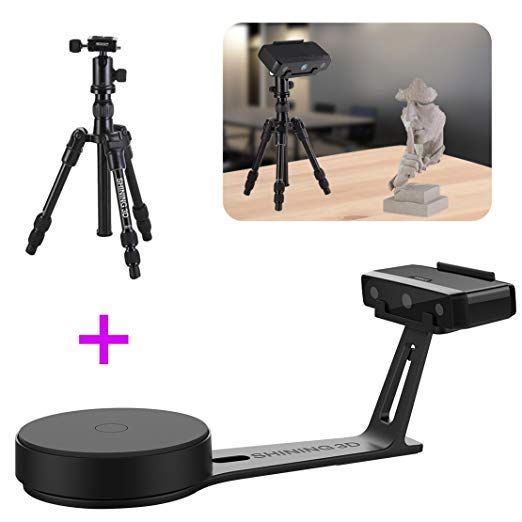 04 mm0.001575 in 04 mm0.001575 in | Canada | $ 21,90019 900 €19,754 £3,183,494 ¥ | Quote |
| Shining 3D This brand is a certified partner from our network. | FreeScan UE Pro | 0.02 mm0.000787 in | China | $ 24,00022 000 €21,648 £3,488,760 ¥ | Contact |
| Artec 3D | Leo | 0.1 mm0.003937 in | Luxembourg | $ 29,80029 800 €26,880 £4,331,877 ¥ | Quote |
| Scantech This brand is a certified partner from our network. | SIMSCAN This product has been reviewed by our team. | 0.02 mm0.000787 in | China | upon request | Contact |
Expand to see more specs
*Accuracy: Results measured in ideal conditions. Note that 3D scanner OEMs do not always follow the same protocols to measure their products’ accuracy.
** Max. resolution: Refers to point-to-point distance.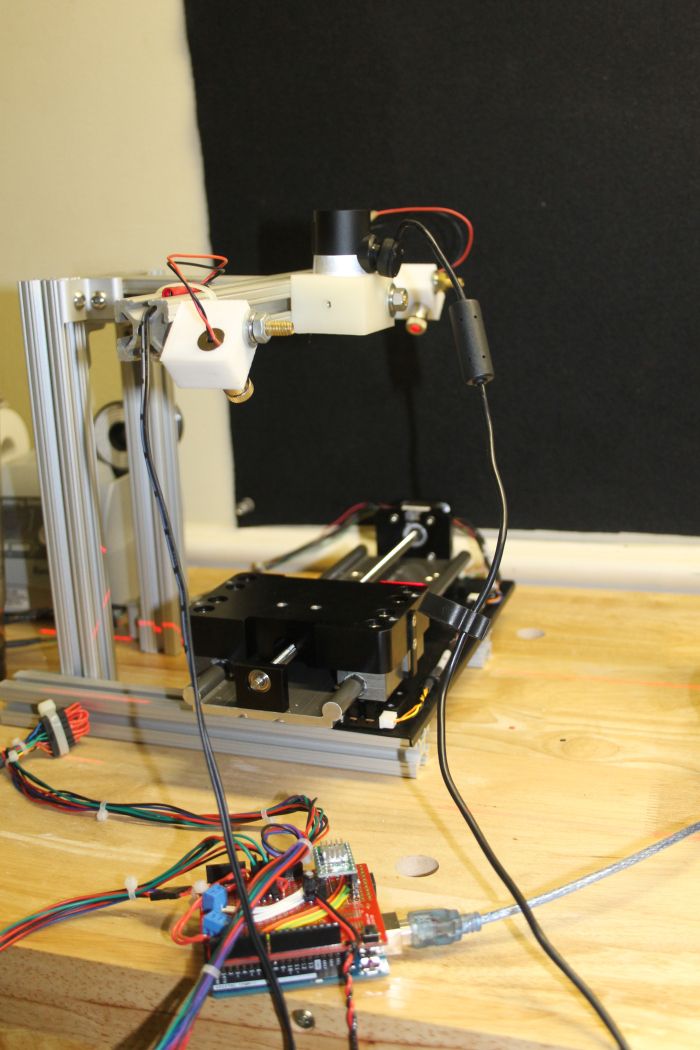 Learn more about 3D scanning resolution and accuracy here.
Learn more about 3D scanning resolution and accuracy here.
The products in the table are ranked by price (low to high).
| Brand | Product | Technology | Os compatibility | Accuracy | Max resolution | Wireless | Weight | Country | Price Approximate starting prices based on supplier-provided information and public data. Prices may vary by region, over time and do not include additional products or services (taxes, shipping, accessories, training, installation, …). | |
|---|---|---|---|---|---|---|---|---|---|---|
| peel 3D This brand is a certified partner from our network. | peel 2 | Structured light | Microsoft Windows | 0.1 mm0.003937 in | 0.5 mm0.02 in | 0.95 kg2.09 lb | Canada | $ 8,0908 090 €7,297 £1,176,003 ¥ | Get a quote | |
| Shining 3D This brand is a certified partner from our network. | EinScan HX This product has been reviewed by our team. | Structured light | – | 0.04 mm0.001575 in | 0.05 mm0.001969 in | 0.71 kg1.57 lb | China | $ 12,00012 000 €10,824 £1,744,380 ¥ | Get a quote | |
| Creaform This brand is a certified partner from our network. | HandySCAN 307 (SILVER series) | Laser triangulation | – | 0.04 mm0.001575 in | 0.1 mm0.003937 in | 0.85 kg1.87 lb | Canada | $ 21,90019 900 €19,754 £3,183,494 ¥ | Get a quote | |
| Shining 3D This brand is a certified partner from our network. | FreeScan UE Pro | Laser triangulation | – | 0.02 mm0.000787 in | – | 0.84 kg1.85 lb | China | $ 24,00022 000 €21,648 £3,488,760 ¥ | Contact manufacturer | |
| Artec 3D | Leo | Structured light | Microsoft Windows | 0. 1 mm0.003937 in 1 mm0.003937 in | 0.2 mm0.007874 in | 2.6 kg5.73 lb | Luxembourg | $ 29,80029 800 €26,880 £4,331,877 ¥ | Get a quote | |
| Scantech This brand is a certified partner from our network. | SIMSCAN This product has been reviewed by our team. | Laser triangulation | – | 0.02 mm0.000787 in | 0.02 mm0.000787 in | 0.57 kg1.26 lb | China | upon request | Contact manufacturer |
Overview of the best handheld 3D scanners under $30,000
In this section, we give some more context and information about each 3D scanner from our selection.
Peel 3d is a subsidiary of Creaform, a leading 3D scanner manufacturer. They first created the original peel 3d (which we reviewed a while back) in order to tap into the entry-level 3D scanner market.
This second-generation peel 3D scanner offers a higher resolution than its predecessor, and is capable of capturing textures and colors.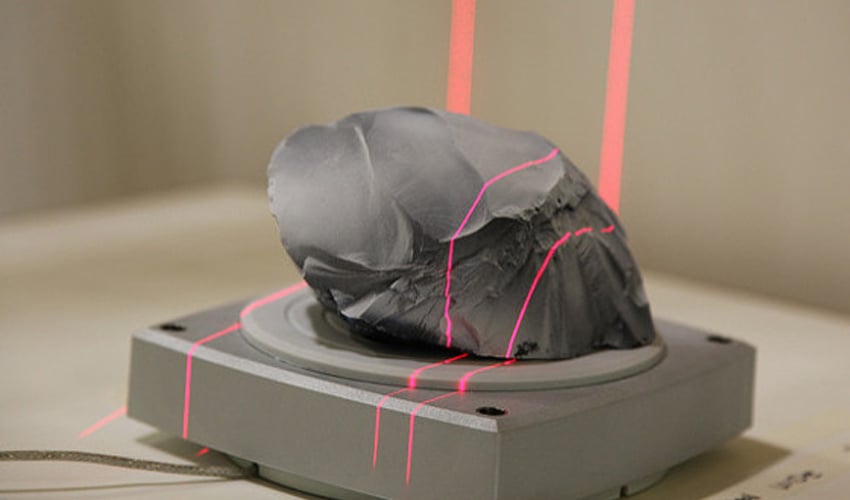 It is available with a smaller scan volume as the peel 2-S version was designed for parts measuring between 5 and 50 cm.
It is available with a smaller scan volume as the peel 2-S version was designed for parts measuring between 5 and 50 cm.
Peel 3D scanners are easy to use, even for beginners with little 3D scanning knowledge. The software that comes with the peel 2 is also intuitive and user-friendly, offering multiple editing functionalities.
Contact manufacturer Get a quote Add to comparison
The EinScan HX is a follow-up to the first-generation EinScan-Pro, EinScan Pro HD, and later EinScan Pro 2X and 2X Plus. In this price range and at this level of performance, the flagship EinScan HX is unrivaled.
This portable 3D scanner features hybrid 3D scanning technology: its rapid mode is based on structured light, while the fine mode uses laser triangulation. The HX is capable of color and texture acquisition, too.
It is a powerful and versatile product that is capable of acquiring difficult surfaces (reflective, dark, or both) and adapting to parts of all sizes. Shining 3D also made great efforts in terms of weight and design; the HX is well-balanced and comfortable to use.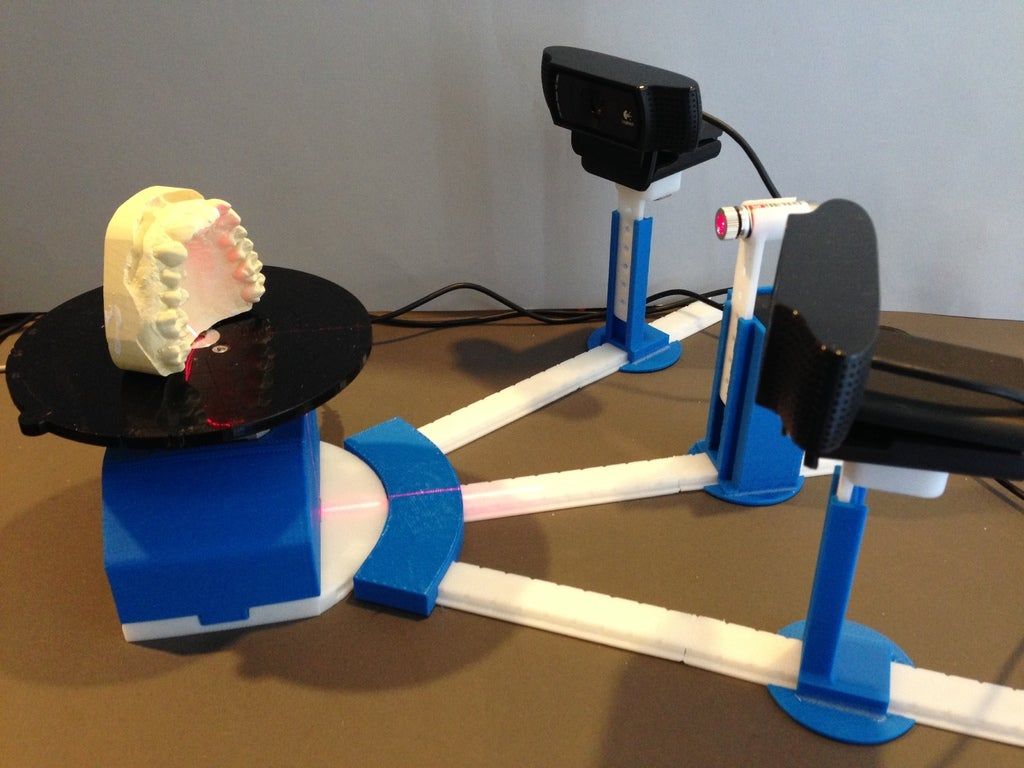
Read the full review: Shining 3D EinScan HX review
Contact manufacturer Get a quote Add to comparison
The SILVER series is a mashup of old and new recipes, combining the HandySCAN 307/700’s excellent reputation with ongoing updates to an already highly capable software.
We reviewed the HandySCAN 700 (HS700) twice; it is identical to the HandySCAN 307 aside that it features a single laser line mode and offers a slightly higher accuracy (0.03mm versus 0.04mm).
In short, we believe that the HandySCAN SILVER Series is an excellent option with a well-rounded and professional software suite. We highly appreciate the fact that the software saves every bit of information from each scan before letting you decide (reversibly) what you keep and which mesh resolution you want.
Read the full review (HS700 version): Creaform HandySCAN 700 review
Contact manufacturer Get a quote Add to comparison
The FreeScan series is a step above the EinScan series, namely in terms of accuracy and repeatability. It is a recent upgrade to the FreeScan X, boasting a faster acquisition rate, larger scanning range, lighter weight, and more competitive pricing.
It is a recent upgrade to the FreeScan X, boasting a faster acquisition rate, larger scanning range, lighter weight, and more competitive pricing.
This blue laser 3D scanner offers metrology-grade precision and repeatability, all while being able to scan difficult surfaces in a wide range of environments and industries. Common industries and applications for this type of 3D scanner include the automotive industry, transportation, mould inspection, energy manufacturing, aerospace, and machine manufacturing, among others.
The FreeScan UE Pro offers three scanning modes: 13 laser crosses for quick scans or large objects, 5 parallel laser lines to scan fine details, and a single laser line for deep holes and pockets.
Contact manufacturer Get a quote Add to comparison
The SIMSCAN is extremely lightweight for a handheld 3D scanner, weighing only 570 grams. It’s also very compact– the absolute smallest in its class– with dimensions of 203 x 80 x 44 millimeters. Scantech earned a Red Dot Design Award in 2021 for the SIMSCAN’s disruptive design.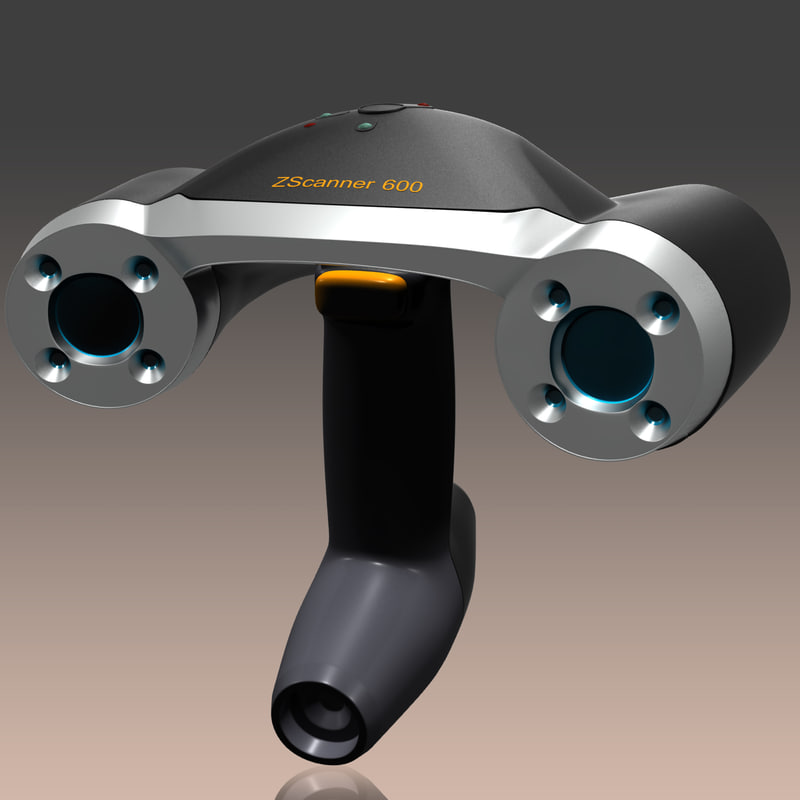
After using the SIMSCAN to 3D scan various types of parts, we can confirm it’s an excellent product that feels, looks, and works great. With a price of around €25,000, the SIMSCAN’s price-to-performance is outstanding. The only blemish lies in the software, but it receives updates regularly and you can export your scans to your preferred suite.
Read the full review: Scantech SIMSCAN review
Contact manufacturer Get a quote Add to comparison
The Artec Leo has been one of the only wireless 3D scanners on the market since its original launch in 2017. It features an onboard processor to capture all data locally, and a large screen that offers real-time 3D visualization.
For its five-year anniversary in March 2022, Artec3D revamped the AI-based Leo with a new processor, the NVIDIA Jetson TX2. It is said to double the Leo’s speed and overall performance. Artec3D now also sells the Leo with a calibration certificate to guarantee its accuracy.
The Leo 3D scanner is a great option, namely in hard-to-reach areas or wherever it can be complex to plug in the Leo and a laptop.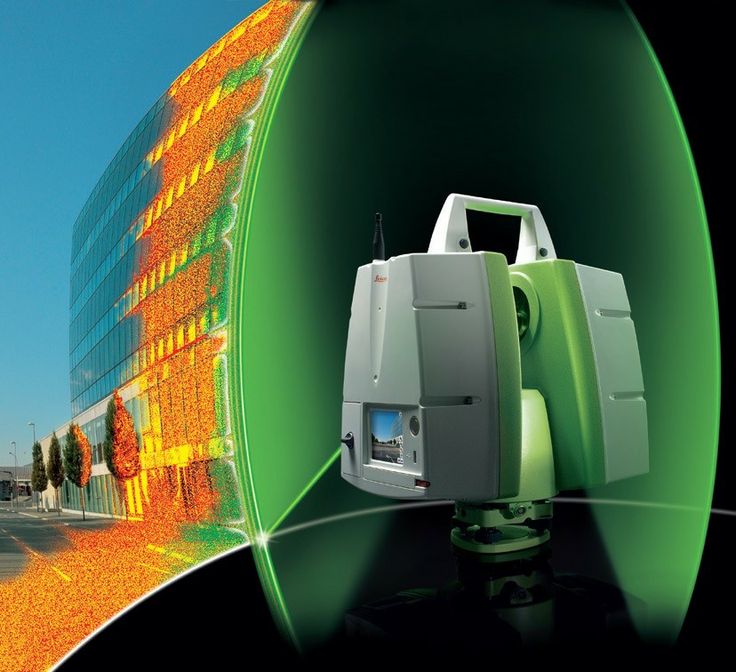 However, for more standard use cases, keep in mind that the Leo weighs 2.6kg; that’s around x5 times heavier than the most lightweight portable 3D scanners.
However, for more standard use cases, keep in mind that the Leo weighs 2.6kg; that’s around x5 times heavier than the most lightweight portable 3D scanners.
Contact manufacturer Get a quote Add to comparison
Portable 3D scanner buying guide
Before choosing a portable 3D scanner, it’s important to take certain elements into account.
Purpose: What do you need your 3D scanner for?
Today’s handheld 3D scanners are very versatile and can be used for multiple use cases in various industries. Nevertheless, there are a few questions you can ask yourself to help make the right choice.
- How big or small are the parts you’re going to scan? This will determine your field of view. Some 3D scanners have multiple modes or fields of view to handle small, medium, and large parts, while some are specially designed for small pieces.
- Are you already familiar with 3D scanning? If you’re new to 3D scanning, you may want to look out for streamlined workflows.
 Some brands have several product generations of experience and provide more intuitive software.
Some brands have several product generations of experience and provide more intuitive software.
- Do you need to acquire colors? Many recent handheld 3D scanners boast texture/color capture, but this feature isn’t standard. It is quite rare on 3D scanners that focus on metrology applications, as having color maps could be superfluous when you just want to inspect a part’s shape.
- Will you be 3D scanning every day? Perhaps you’d prefer a 3D scanner that’s easy and quick to set up and put away.
3D scanning can serve an amazing amount of purposes– determine yours before you choose a handheld 3D scanner.
Handheld 3D scanner specifications
Accuracy
A 3D scanner’s accuracy is its ability to obtain exact measurements. In certain industries, like quality inspection, high accuracy is of utmost importance. Entry-level handheld 3D scanners generally boast accuracies around 200 microns, while more premium products can go down to 20 microns.
Resolution
Just like with photos or screens, the level of resolution will count more or less depending on the amount of detail you need. In 3D scanning, resolution is generally measured in point-to-point distance.
Speed
The speed factor is especially important when 3D scanning large objects and landscapes (where SLAM/iMMS scanners shine), or for 3D body scanning.
Large objects take a while to scan, and some 3D scanners require you to stand still for a few seconds before moving on to the next perspective. Keep in mind that you’ll be “pointing and shooting” with your handheld 3D scanner in your hand; the longer you carry it, the heavier it feels.
Nonetheless, some 3D scanners like the Go!SCAN SPARK or the EinScan HX allow you to easily pause and resume from anywhere thanks to efficient automatic scan alignment.
Budget
Last but not least, and as is the case for so many other products, budget is definitely something to take into account. There are cheap handheld 3D scanner options for under $1,000 if you’re willing to sacrifice accuracy and performance (see our “Affordable 3D scanner” selection here).
There are cheap handheld 3D scanner options for under $1,000 if you’re willing to sacrifice accuracy and performance (see our “Affordable 3D scanner” selection here).
Industrial 3D scanners are the most expensive, with advanced 3D scanning technologies and prices around $100K. Unless you need a 3D scanner for 24/7 automated quality inspection or other very specific use cases, an entry or mid-level 3D scanner will suit you.
FAQ
How much does a handheld 3D scanner cost?
Mid-range handheld 3D scanners tend to cost between $10,000 and $30,000. There are affordable handheld 3D scanner options under $1,000, and high-end, metrology-grade handheld scanners priced at over $50,000.
How accurate are handheld 3D scanners?
High-end handheld 3D scanners can reach an accuracy up to 0.020mm. Entry-level, affordable scanners offer a scan accuracy of around 0. 10mm.
10mm.
The Best 3D Scanners in October 2022 (Hobbyist & Commercial)
3D scanners are changing how we make, design, and see the world. By scanning nearby objects, people and almost anything else, these scanners create entire 3D digitized models of physical objects in just seconds.
Sometimes called 3D laser scanners, 3D model scanners or 3D object scanners, 3D scanners are integral for custom 3D printing and other fun home 3D scanner uses, for saving historical artifacts as digital models, dentistry – and so much more.
What’s more, you can now pick up powerful low-cost 3D scanners for just a few hundred dollars, and if you’re content with low-quality basic scans, you can even use your phone!
BUDGET PICK
Revopoint POP 2
Versatile and portable with handheld & stationary options and color scanning
Up to 0.05mm accuracy on a small scanner that costs under $1000
Available at:
Revopoint hereMID-RANGE PICK
Matter & Form V2
Accurate 0.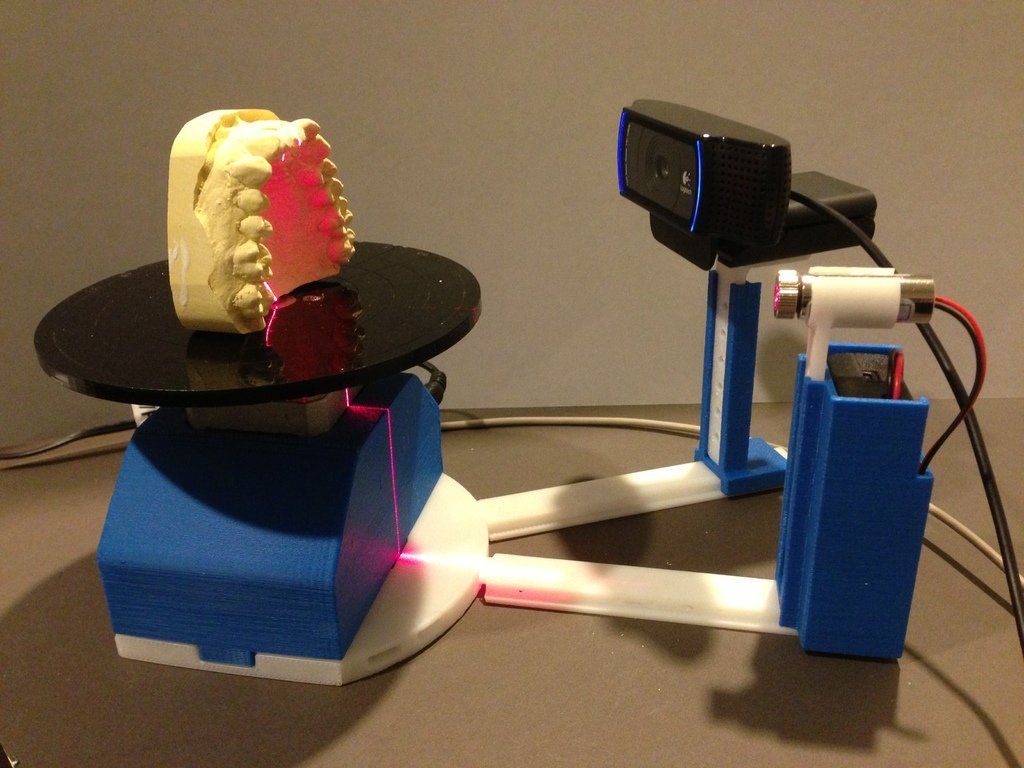 1mm scans
1mm scans
Powerful stationary scanner for 25x18cm objects
Comes with specialized software
Available at:
Amazon hereDynamism herePREMIUM PICK
Shining 3D EinScan H
0.05mm scan accuracy and 0.25mm resolution with 1.2 million points/s
Infrared scan sensors make scanning darker colors easier
Available at:
Dynamism hereTo rank the best 3D scanners, we considered:
- Accuracy and resolution
- Scan area (benefiting handheld scanners that can scan larger areas)
- Scan speed
- Ease of use
- Price-performance ratio
- Versatility
We also separated our 3D scanner reviews into three main price categories:
- 3D scanners under $1000
- Mid-range 3D scanners ($1,000 to $10,000)
- Industrial 3D scanners ($10,000+)
The Best 3D Scanners for All Prices Ranges
| 3D Scanner Brand & Name | Type of 3D Scanner | Price | Where to buy and where has the best price |
|---|---|---|---|
| Revopoint 3D POP 2 | Structured Light | $699 | Revopoint 3D here |
| Creality CR-Scan 01 | Structured Light | $700 | Creality Store here |
| SOL 3D scanner by Scan Dimension | Desktop 3D Scanner | $699 | Amazon here |
| BQ Ciclop | Laser Triangulation (DIY) | Depends if pre-assembled or DIY | Amazon here |
| Matter & Form V2 | Desktop 3D Scanner | $749 | Amazon here |
| Shining 3D EinScan SE | Desktop 3D Scanner | $1,399 | Amazon here |
| EinScan H | Handheld | $4,999 | Dynamism Store here |
| Shining 3D EinScan Pro 2X Plus | Handheld 3D Scanner | $6,800-$8,300 | Amazon here |
| Scantech iReal2E | Handheld 3D Scanner | $3,980 | Scantech Site |
| Artec EVA | Industrial 3D Scanner | $19,800 | |
| Scantech SIMSCAN | Portable 3D scanner | Contact for price | Scantech site |
| Scantech KSCAN | Handheld 3D Scanner | Contact for price | Scantech site |
But before we get into the best scanners, here’s a quick intro to how 3D scanners work:
How Does a 3D scanner Work?
3D scanners work by creating point clouds based on images taken of a solid surface or object — basically huge numbers of data points that denote where an object is — to create a 3D model of the scanned part.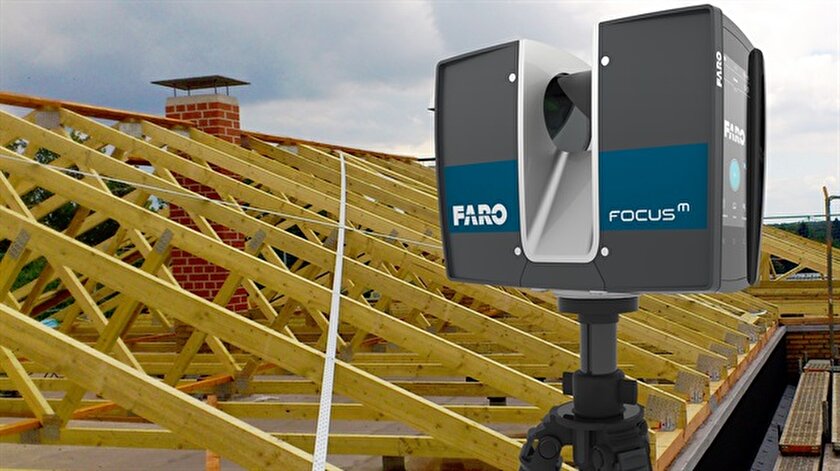 Millions of individual data points make up the model, which you can then export as an STL, OBJ or other file type and import to CAD software, or 3D print via a slicer.
Millions of individual data points make up the model, which you can then export as an STL, OBJ or other file type and import to CAD software, or 3D print via a slicer.
3D scanning includes several different technologies, such as Structured Light scanning and Laser Triangulation, while some are stationary and some are handheld.
The Best 3D Scanners 2022: Budget Picks
3DSourced is reader-supported. When you buy through links on our site, we may earn an affiliate commission. Learn more
Revopoint POP 2
- Price: $699 — Available at Revopoint Official store here
- Precision: 0.05 mm
- Scan Speed: 10 FPS
- Minimum Scan Volume: 20 x 20 x 20 mm
- Single Capture Range: 210 x 130 mm
- Working Distance: 150 – 400 mm
- Point Cloud Distance / Single-Frame Accuracy: 0.15 mm
We were extremely impressed with the Revopoint POP 2 when we tested it recently, and overall we feel it’s the most versatile and powerful 3D scanner under $1,000.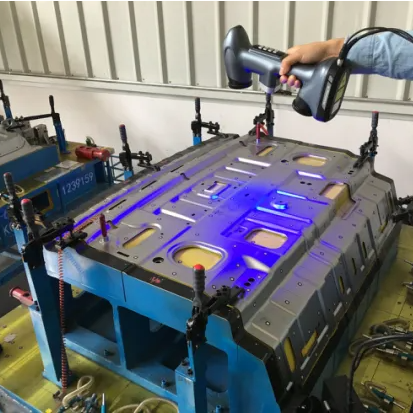 While there are some great stationary scanners like the Matter and Form V2, the Revopoint’s usability for turnstile stationary scanning, color scanning, as well as handheld scanning for faces and bodies makes it the ideal multi-use 3D scanner.Scanning a toy with the Revopoint POP 2 using the “fill holes” setting (often leave it off and sort any errors in post).
While there are some great stationary scanners like the Matter and Form V2, the Revopoint’s usability for turnstile stationary scanning, color scanning, as well as handheld scanning for faces and bodies makes it the ideal multi-use 3D scanner.Scanning a toy with the Revopoint POP 2 using the “fill holes” setting (often leave it off and sort any errors in post).
The POP 2 notably upgrades on the original POP, with precision increased from around 0.3mm to up to 0.05mm (our tests found it to be in the 0.07mm range, which is still very impressive), a slightly faster scan speed of 10fps vs 8, and a slightly smaller minimum scan volume of 20mm³ vs the original POP’s 30mm³.Testing the precision accuracy of the Revopoint POP 2 during calibration.
It scanned color images well when we tested it on some kids toys and a multi-color Rubik’s cube, and scanned faces accurately (but you need to change some settings around to prevent any noise distorting your scanned faces).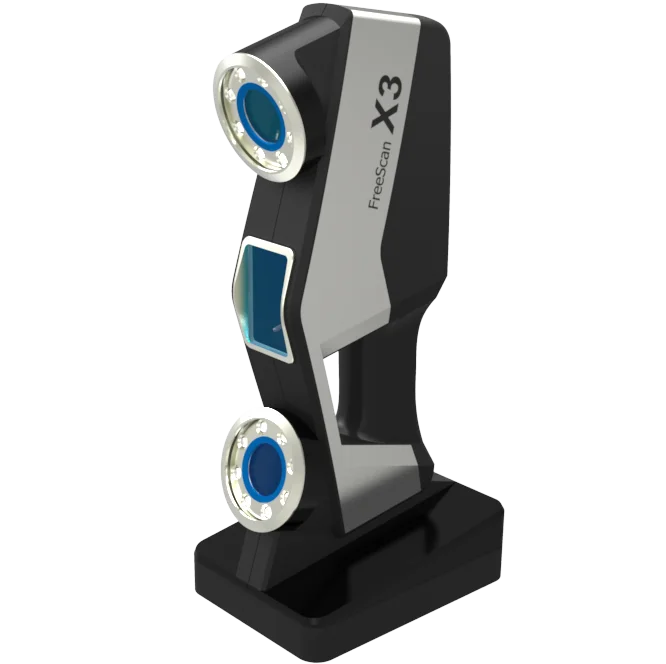 Don’t automatically mesh clouds however when face scanning – it’ll create distorted scans such as this one we tried.
Don’t automatically mesh clouds however when face scanning – it’ll create distorted scans such as this one we tried.
Overall, we highly recommend it as one of the best scanners in its price range – standard scanning, face scanning, color, or entire body scanning, it’s good for all uses.Testing the color 3D scanning and editing the scan in Revo Studio software.
Compare the scanners: Revopoint POP vs POP 2
Creality CR-Scan 01
- Price: $650-$700 — Available at Creality Official store here / Amazon here
- Accuracy: 0.1 mm
- Resolution: 0.5 mm
- Max Scan Volume: 536 x 378 mm
- Technology: Structured light
- Speed/Frame Rate: 10 FPS
With a cemented reputation for offering some of the best budget 3D printers on the market today, Creality aims to do very much the same with the affordable Creality CR-Scan 01 3D scanner. It employs structured light technology to feel out the shape, size, and texture of a 3D object to generate a digital reproduction.
It employs structured light technology to feel out the shape, size, and texture of a 3D object to generate a digital reproduction.
Creality has fitted the CR-Scan 01 with both a handheld mode and a stationary turntable mode, each with their own set of advantages:
- In handheld mode, the scanner quickly works through larger objects, offering flexibility and on-the-fly capture.
- Switch to turntable mode, and the tripod-mounted Creality CR-Scan 01 creates an automated, higher-accuracy 360° scan as the object rotates on the turntable.
Both modes offer accuracy of 0.1 mm, a resolution of 0.5 mm, 24-bit high-fidelity color mapping, and marker-free scanning thanks to a clever alignment algorithm.
The Creality CR-Scan 01 also makes smart adjustments based on light levels, making it suitable for low-light environments. These are all excellent features for the asking price and sufficient for most hobbyist scanning needs, although somewhat lacking for high-precision scanning.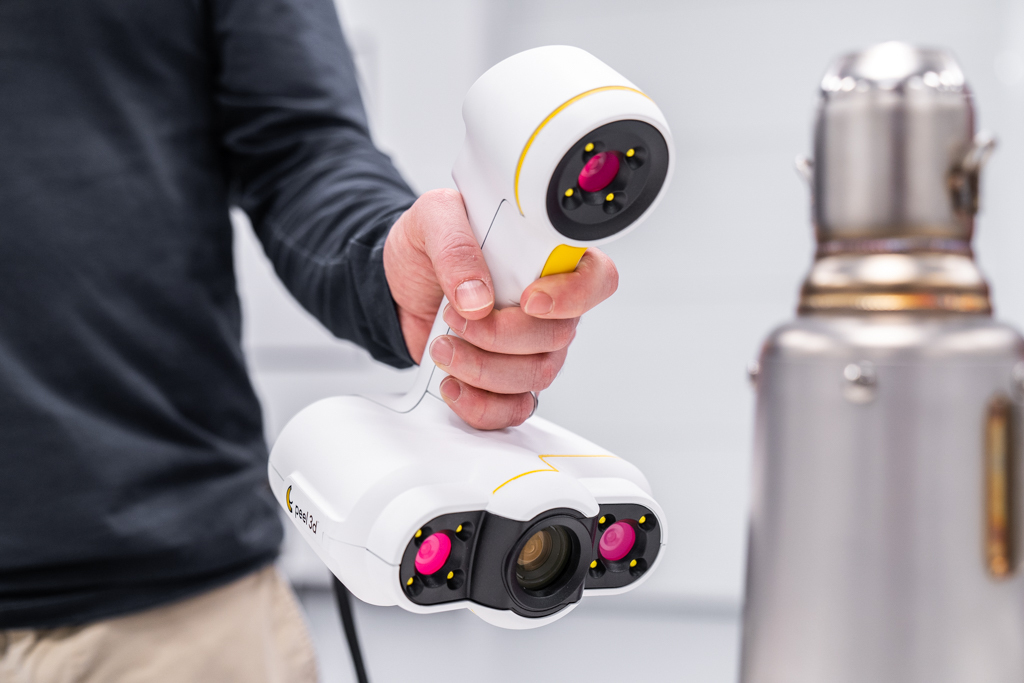
However, where the Creality CR-Scan 01 shines is a distance of 400-900 mm, which outclasses most budget 3D scanners, with a scanning area of 536 x 378 mm. In practice, you can scan medium to large objects further away with a larger frame size, which speeds up the scanning process considerably.
Finally, the bundled Creality’s CR Studio is a robust post-processing suite with all manner of editing, repair, color, and smoothing tools to polish off digital scans ready for 3D printing or other applications. It’s a solid competitor to the Revopoint scanners.
SOL 3D Scanner by Scan Dimension — Perfect desktop 3D scanner
- 3D scanner price: $699 — Available on Amazon here
- Accuracy: up to 0.1 mm
- Scan volume: up to 170 x 170 mm
- Scan speed: 10 min in Turbo mode, 20 min normally
SOL is a desktop laser scanner designed for scanning small yet detailed items, with good accuracy for the price.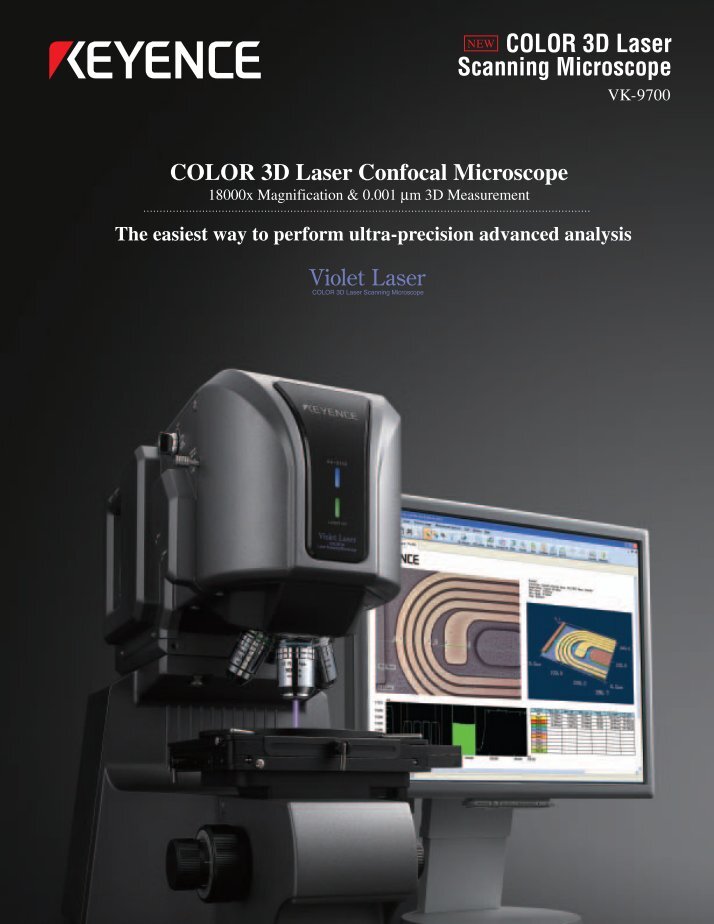
The actual scanner itself weighs just 7 pounds, and can scan objects that weigh up to 2kg. This light weight makes it a perfect portable 3D scanner if you’re on the move.
It has two different modes depending on what you’re scanning:
- Near mode: for scanning objects of up to 100 mm in diameter and 100 mm in height.
- Far mode: for scanning objects up to 170 mm in diameter and 170 mm in height.
The SOL boasts an accuracy of around 0.1 mm, extremely good for the price range. You scan objects with their included SOL 3D software, and can then easily export your scans as OBJ or STL files and import them into a 3D slicer for 3D printing.
Danish company Scan Dimension promotes this impressive 3D visualizer not only for makers or hobbyists, but also for entrepreneurs. They sell the SOL 3D scanning camera as a way for entrepreneurs to show their products off with a 360-degree view, with easy ways to share these scans on Facebook.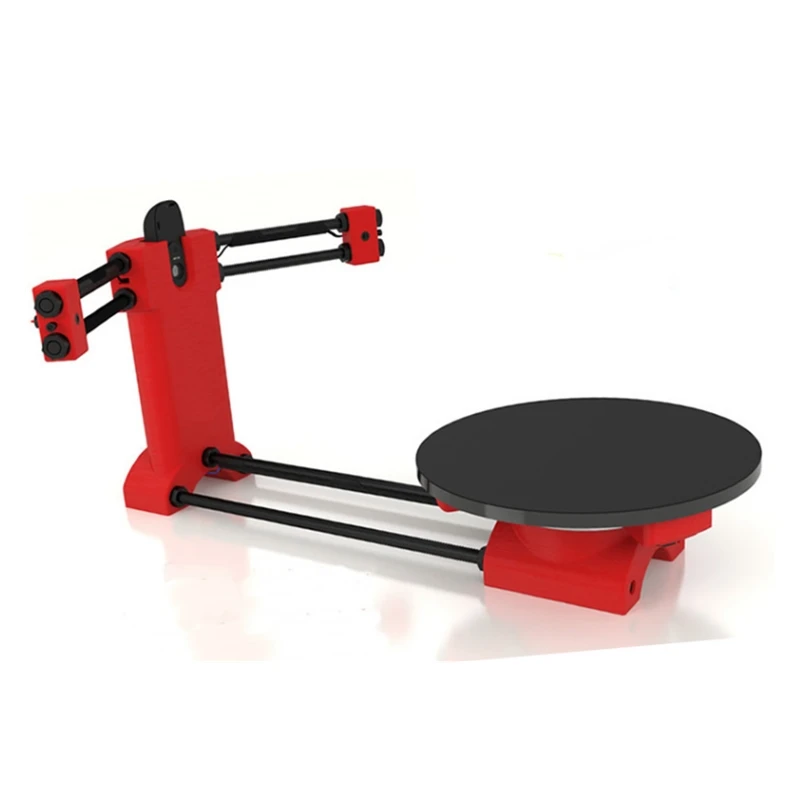
Additionally, Scan Dimension say the scanner is also perfectly suited for education, for teaching students STEM education through scanning and editing structures.
Overall, it’s well suited as both a 3D scanner for businesses, as well as a home 3D scanner for hobbyists.
BQ Ciclop — Home-made 3D scanner for technical makers
- Price: Depends if buying or DIY — Available on Amazon here
- Resolution: 0.5 mm
- Scan time: 2-8 mins
- Maximum scan volume: 200 x 200 x 205 mm
- 3D scanning technology: Laser Triangulation
Unlike many scanners, this DIY 3D scanner is open source, with all the files hosted on Thingiverse for you to download and print. The Ciclop has proven popular, with tens of thousands of downloads on Thingiverse alone.
BQ provides all of the information, software, and electronics for this 3D scanner kit which you can modify for yourself on their website, and other variations have been brought to market offering tweaks and improvements on the opensource design, such as CowTech’s version.
Read more: the other variations of Ciclop feature in our DIY 3D scanners review
The BQ Ciclop 3D scanner uses laser triangulation technology, and can scan objects in a few minutes. Moreover, the simple and well-written instructions allow anyone, no matter their skill level, to build the scanner in under an hour. BQ host downloads for all the drivers for the camera and firmware that you need, and developed a specialized 3D scanner app called Horus for scanning on your Ciclop.
It’s simple but effective. It’s made from ten 3D printed parts (download .STL files from Thingiverse), a threaded rod, a Logitech C270 webcam, two line lasers, and a turntable platform with a stepper motor, though you can edit and modify it as you wish.
The BQ Ciclop scans a volume of 250 x 205 mm and has a resolution of up to 0.5mm. It can be connected via USB or Bluetooth, making it a versatile and affordable low-cost 3D scanner for beginners.
Spanish tech company BQ have released this open-source 3D scanner which you can put together inexpensively.
Matter and Form V2 MFS1V2 — Portable 3D scanners under $1,000
- 3D scanner cost: $749 — Available on Amazon here / Available on Matterhackers here
- Scan volume: 250 x 180 mm
- Accuracy: within 0.1 mm
- Scan speed: up to 65 seconds
The Matter and Form V2 is an updated version of the original desktop 3D scanner made by the Canadian tech startup. This low-cost 3D scanner uses 2 lasers and an HD-CMOS sensor to produce high-resolution, full-color 3D scans.
The scanner has an accuracy of up to around 0.1mm, and is easily connectable to your computer through USB to transfer over your scans.
For editing scans, the Matter and Form scanner comes with specialized Mfstudio, and +Quickscan which boosts scan speed to up to 65 seconds. You can then export the STL file and print them with your 3D printer.
The 3D scanner can scan objects in sizes up to 25 cm tall and 18 cm in diameter.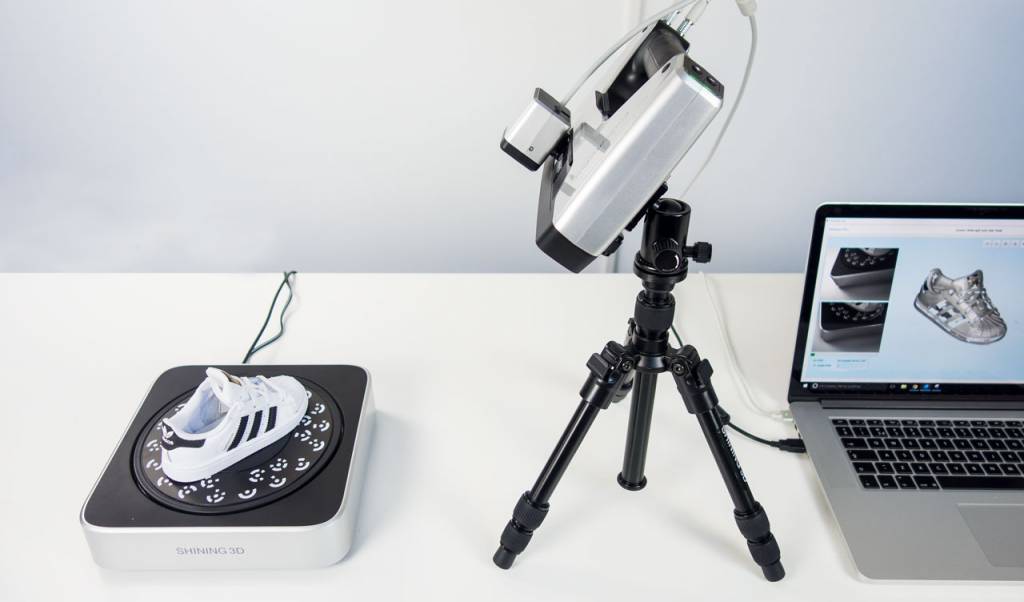 It is compatible with every major OS, so Mac users needn’t worry. What we like most however is that it folds up, making it a perfect portable 3D scanner.The new Matter and Form scanner can generate a full 3D scan in 65 seconds.
It is compatible with every major OS, so Mac users needn’t worry. What we like most however is that it folds up, making it a perfect portable 3D scanner.The new Matter and Form scanner can generate a full 3D scan in 65 seconds.
Medium Priced 3D Scanners: $1,000 to $10,000
Shining 3D EinScan SE — Best 3D scanner under $2000
- Price: $1,199 — Available on Amazon here / Dynamism here
- Scan accuracy: within 0.1 mm for single shots
- Scan range: single scan = 200 x 150 mm, maximum scan range = 700 x 700 mm
- Scan speed: a single shot is under 8 seconds
Shining 3D have made a name for themselves in the medium-range 3D scanning sector, with cheaper options such as the EinScan-SE as well as more expensive scanners like the EinScan Pro 2X Plus.
The EinScan SE is one of the best 3D object scanners in its price range. It scans in around 8 seconds (versus 4 seconds for the EinScan SP) and can complete a whole 360-degree scan in its Automatic Scan mode in around 2 minutes.
It can scan objects up to around 200 mm wide and 150 mm tall, with a single shot accuracy of within 0.1 mm — making it one of the best 3D scanners under $2000. For a fixed scan without the turntable, max scan volume increases up to 700 x 700 mm.
Overall, this 3D model scanner is accurate, reliable, and makes it easy to quickly scan stationary objects and 3D print them with ease. The EinScan SP — described in more detail further in this guide — is more precise, but costs more. Therefore, it’s a matter of your budget and how important this additional quality is for you personally.
EinScan H
- Price: $5,000 — Available at Dynamism here
- Accuracy: 0.05 mm
- Resolution: 0.25 mm
- Max Scan Volume: 780 x 900 mm
- Technology: Hybrid structured light LED and infrared
- Speed/Frame Rate: 1,200,000 points/s, 20FPS
The EinScan H is a professional-grade handheld 3D scanner that combines speed, accurate reproduction, and ease of use with a particular emphasis on bringing usually tricky 3D objects to digital life.
The EinScan H combines two light sources – structured LED and invisible infrared – to cover a wide range of 3D objects, modes, and applications.
For example, the infrared light excels at capturing the detail and intricacies of darker colors, notably those of human hair and general facial scanning – with dark hair the bane of any experienced face 3D scanner.
An added benefit of the invisible light is more comfortable scanning for the subject and no on-face glare to complicate the scanning process.
Manufacturer Shining 3D has also gone to considerable lengths to merge impressive accuracy and resolution along with fast scanning speeds. The EinScan H pushes a resolution of 0.25 mm with accuracy as low as 0.05 mm, all at roughly 1,200,000 points/s at 20FPS.
The scanner also features authentic, full-color reproduction with solid texture mapping that translates to systematically excellent scan quality.
According to Shining 3D, it’s possible to scan an entire human body in fine detail in a matter of minutes.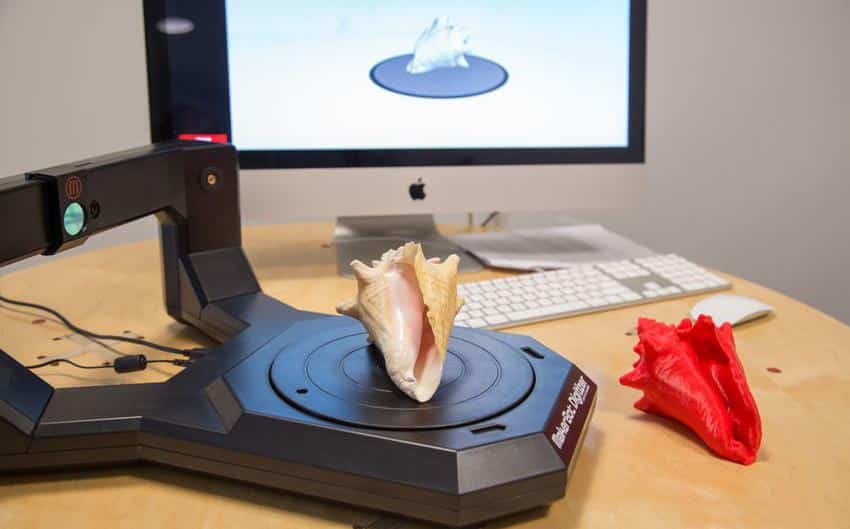 A generous 420 x 440 mm single capture range helps keep things speedy even when scanning large objects aided by an optimized alignment algorithm to keep scans crisp and precise.
A generous 420 x 440 mm single capture range helps keep things speedy even when scanning large objects aided by an optimized alignment algorithm to keep scans crisp and precise.
Although priced at $5000, the EinScan H falls roughly in the affordable range and is a versatile tool suited for healthcare, art, forensic science, and other professional 3D modeling applications.
Scantech iReal 2E Color 3D Scanner — A complete 3D scanning solution
- Price: $3,980
- Scanning area: Up to 850 mm x 800 mm
- Accuracy: Up to 0.100 mm
iReal 2E is a professional handheld color 3D scanner manufactured by Scantech. The company specializes in developing, manufacturing, and selling intelligent visual inspection equipment and sells an entire range of 3D scanners for various applications and sectors.
The iReal 2E uses red VCSEL structured light technology to offer you a simple and safe 3D scanning experience, eliminating the issues of dazzling lights and difficulties in hair 3D scanning.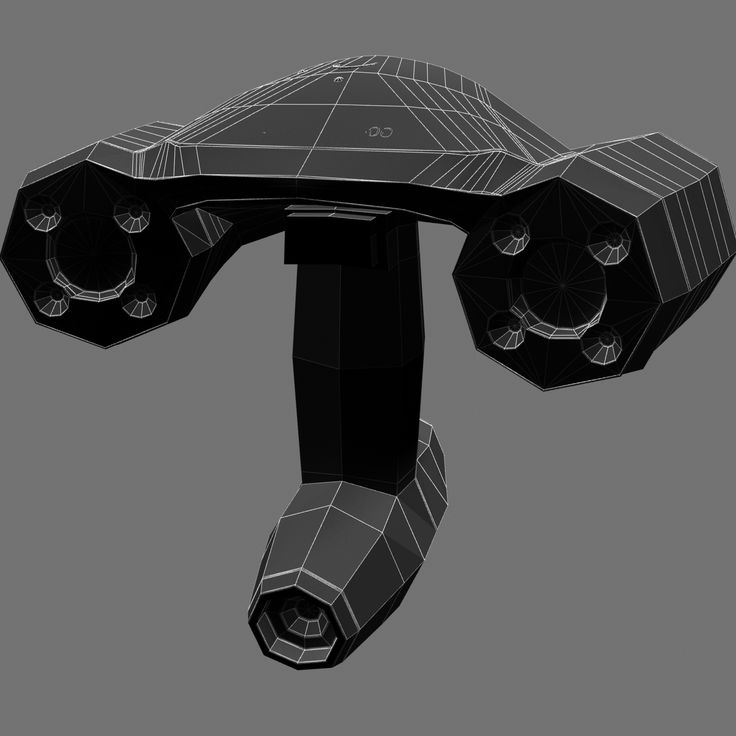
Without attaching markers, a quick and accurate texture and geometry scan can be achieved with a wide scanning area of 850 mm x 800 mm, 750 mm depth of field, 1.5 million measurements per second, and at 0.100 mm accuracy. Mixed alignment modes meet various scanning situations.
Shining 3D EinScan SP
- Price: $2,599 — Available on Amazon here / Dynamism here
- Scan range: single scan = 200 x 150 mm, max scan range = 1200mm³
- Accuracy: within 0.05 mm for single shots
- Speed: single shot speed of under 4 seconds
The second Shining 3D medium-range 3D scanner in our ranking, the EinScan SP is more accurate than the EinScan SE, with accuracy up to 0.05 mm rather than 0.1 mm, and scans single shots in half the time (4s vs 8s).
To save you time: double the price, double the accuracy — and half the scanning time.
The scanner uses white light scanning technologies to make very accurate scans of objects as small as 30 x 30 x 30 mm.
Full objects are typically scanned in less than a minute, and images in less than four seconds.
What’s more, despite its cheaper price, many buyers have reported that it can compete with scanners costing ten times as much for scan quality. It also comes with a tripod for stationary object 3D scanning.
Shining 3D EinScan-Pro 2X Plus — One of the best 3D scanners around
- Price: $5,999 (full industrial pack costs extra) — Available on Amazon here / Dynamism here
- Accuracy: up to 0.04mm in fixed scan turntable mode
- Volumetric accuracy: 0.3mm/m
- Speed: fixed scan single shot in under 0.5 seconds / up to 30fps with handheld use
The EinScan-Pro 2X Plus costs more than the EinScan SP and H, and can be used as a fixed or handheld 3D scanner to capture various-sized objects.
It uses white light 3D scanning technologies to increase accuracy and scan faster (sub 0. 5-second single shot scans), creating high-quality scans in record time.
5-second single shot scans), creating high-quality scans in record time.
You can simply hold the scanner and point it towards the object or room you want to 3D scan, and instantly record crisp scans of your surroundings. Whereas lower-cost scanners limit you to desktop sizes, the Pro 2X Plus frees you to capture entire rooms.
You may want to 3D scan a car, your friend, or even turn it into a baby 3D scanner for a 3D memory of your child before it grows up!
You retain the accuracy however with the scan volume freedom, with accuracy up to 0.03mm for objects less than 4m away.
Industrial & Professional 3D Scanners: $10,000+
Artec EVA — Powerful handheld 3D scanner
- Price: $19,800
- Accuracy: up to 0.1 mm + 0.3mm/m
- Resolution: up to 0.2 mm
- Speed: captures up to 16fps in HD and full-color
- Working distance: 0.4m – 1m
Creating new innovative solutions in 3D technology since 2007, Artec 3D is a global leader in handheld 3D scanners.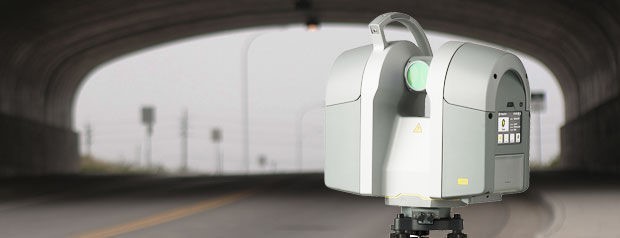 Their most popular scanner, the Eva, is a handheld, industrial 3D object scanner, and an excellent solution for medium-sized objects ranging from motorcycle wheels to car exhaust systems, human busts and facial close-ups.
Their most popular scanner, the Eva, is a handheld, industrial 3D object scanner, and an excellent solution for medium-sized objects ranging from motorcycle wheels to car exhaust systems, human busts and facial close-ups.
Light, quick, and versatile, Artec Eva captures precise measurements in high resolution, while structured light scanning technology makes the scanner safe to use in any situation – even difficult to scan surfaces such as black or shiny surfaces are effectively captured by Eva.
Ideal for use in industries including product design, heritage preservation, healthcare, and reverse engineering, this market leader can accurately scan full-color objects at a range of up to 100cm with color and texture, making it a great solution for fast and accurate 3D models.
Scantech SIMSCAN — hand-sized portable 3D scanner
- Accuracy: up to 0.020 mm
- Resolution: up to 0.025 mm
- Scanning area: up to 410 x 400 mm
Scantech’s SIMSCAN consists of two sets of industrial black & white cameras, a laser projector with 30 laser lines, and a set of multifunctional buttons.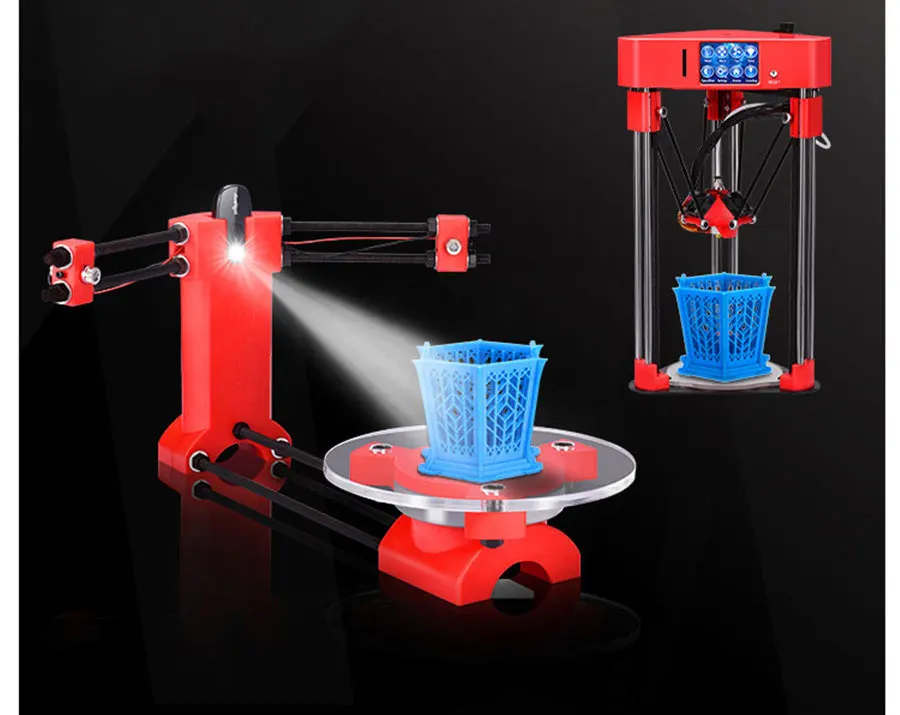 Its high-quality components ensure fast and stable 3D scanning.
Its high-quality components ensure fast and stable 3D scanning.
It features three scanning modes: ultra-fast scanning, hyperfine scanning, and deep hole scanning optimized for different scanning situations. With its intelligent auxiliary lights, it can even scan darkly lit objects.
Powered by a robust algorithm, SIMSCAN’s measurement rate can be up to 2.02 million measurements/s with an accuracy of up to 0.020 mm. It has a field of view of up to 410 x 400 mm.
With a net weight of 570g, SIMSCAN can be among the top list of the most lightweight and portable 3D scanners in the market. It is designed for both beginners and professionals to conduct 3D scanning regardless of ambient conditions. Thanks to its compact size and portability, SIMSCAN enables on-site and efficient 3D scanning, and it suits well for scanning hard-to-reach areas.
Made from aerospace-grade aluminum-alloy, Scantech’s SIMSCAN scanner is sturdy and durable and performs well in heat dissipation. Its material ensures a prolonged use of the 3D scanner. With an anti-slip shell and a hand strap, you can orient this scanner in any way you choose to suit your 3D scanning needs.
With an anti-slip shell and a hand strap, you can orient this scanner in any way you choose to suit your 3D scanning needs.
Scantech KSCAN-Magic — industrial handheld 3D scanner
- Resolution: 0.010 mm
- Scanning rate: 1,350,000 measurements/second
- Scanning area: 1440 x 860 mm
Esteemed 3D scanner company Scantech have announced the launch of their latest KSCAN 3D scanner, with 5 five different modes for all types of scanning. These include a large area scanning mode, fast scanning mode, photogrammetry, as well as a fine scanning mode. Featuring both infrared lasers and blue laser technologies allows the KSCAN-Magic to accomplish a wide range of scanning functions effectively.The KSCAN-Magic 3D scanner can handle large, industrial objects like plane parts, as well as intricate, smaller objects.
It scans accurately, quickly, can handle small and large objects, and is designed to accelerate time-to-market. The 41 equipped laser lines can handle an incredible 1. 35 million measurements per second, creating detailed scans in record time.
35 million measurements per second, creating detailed scans in record time.
If you are looking for leading-edge 3D solutions for your business, KSCAN definitely surpasses expectations with its resourcefulness and precision.
Are 3D Scanners Worth It?
3D scanners are almost always worth the investment, but to decide which is best for you, you’ll need to consider your budget, needs, and priorities. Keep an eye on scan resolution quality and accuracy, scan speed, and price to find a 3D scanner that’s worth it for you.
Buyer’s Guide – Things To Consider When Buying A 3D Scanner
Budget
Expect to pay anywhere from $400 to $200,000 for a 3D scanner. There are numerous options suited to all budgets dotted between those two extremes.
Entry-level hobby scanners suitable for 3D printing are available for less than $1,000, while more robust machines suited for light-professional scanning sell for around $5,000.
Should you want the cream of the crop scanners designed for the most-demanding industrial-level applications such as engineering, expect to pay more than $10,000.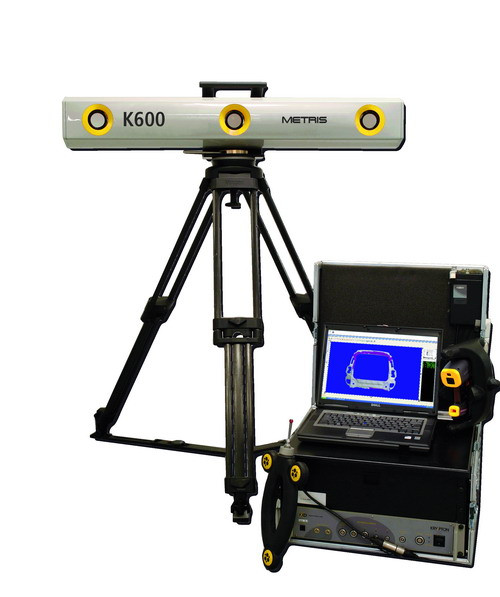
Speed
When applied to 3D scanners, speed refers to the rate at which a machine captures or scans a 3D object. Consumers and most professional 3D scanners record speed in points per second or frames per second. The higher the count, the faster the scanner.
If you’re buying for a professional setting where productivity is critical, we recommend eyeing faster printers, which generally push points per second into the millions and frame rates around 20 FPS.
Resolution and Accuracy
Accuracy refers to how well the finished digital object matches its real-world counterpart. Accuracy pops up in specification sheets expressed in mm, which indicates to what degree the 3D scan sticks to the shape, size, features, etc., of the real-world object.
For a budget 3D scanner, 0.1-0.2 mm is a solid reference point, while much more expensive industry scanners can jump to as low as 0.009 mm on the most powerful devices.
Though similar to accuracy, the resolution refers to the smallest possible distance between points on a 3D scan.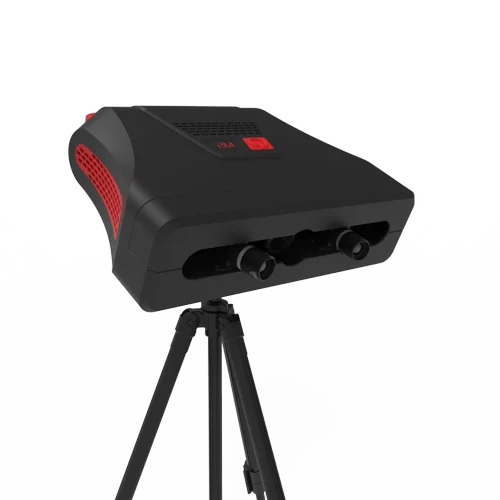 In layman’s terms, a higher resolution delivers finer details and more intricate, faithful features. You’ll find manufacturers refer to resolution in mm, a measure that balloons and shrinks based on the price of the 3D scanner.
In layman’s terms, a higher resolution delivers finer details and more intricate, faithful features. You’ll find manufacturers refer to resolution in mm, a measure that balloons and shrinks based on the price of the 3D scanner.
Budget printers waver around 0.3-0.5 mm, while professional scanners can push resolutions as high as 0.1 mm.
Software and Connectivity
Connectivity refers to how a 3D scanner allows you to scan, export work, and interface with a PC or other device as well as the source of power. In most cases, USB is the standard, with some outliers offering Bluetooth.
If you’re looking for portability, consider handheld scanners that pair with Smartphones and power banks so you can quickly scan on the move.
Software tied to 3D scanners come in all shapes and sizes, from barebones scanning tools to advanced suites with all manner of post-processing touch-up options.
It goes without saying that software capabilities match the target audience of each scanner.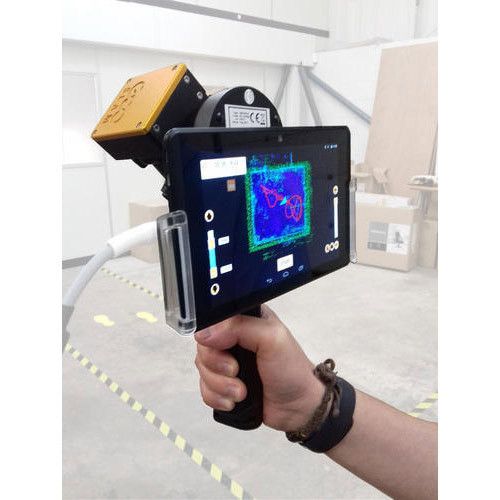 Pay more for a professional scanner, and the software generally features a more robust set of tools.
Pay more for a professional scanner, and the software generally features a more robust set of tools.
Use Case
Entry-level 3D scanners are a good option for hobbyists looking to scan objects with 3D printing in mind. They are just about affordable and work well, although they lack the detail and speed of pricier models.
We recommend handheld 3D scanners for larger models. These grant a degree of freedom and movement to capture all the detail and breadth of bigger objects. A large scan area helps speed up scanning large objects, too.
For small fixed object scanning, where capturing all the rich details and texture of a model tops your list of requirements, look to stationary scanners, ideally with a turntable, tripod, and an optimized alignment algorithm.
3D Scanning to 3D Print
3D scanners are often used to create 3D printable models, with 3D scanner and 3D printer setups allowing you to replicate almost anything in front of you. Simply use the 3D scanning camera to create a digital model of your object, and then 3D print the scan.
Large objects can be scanned using handheld 3D scanners and moved around the object’s dimensions, and then sized down and 3D printed as a scale model. These 3D printer scanner combos offer almost limitless versatility.
3D Scanner Cost
Budget/entry-level
Thanks to efforts from companies like Creality and Revopoint, there’s a concerted effort to lower the cost of entry and boost accessibility to 3D scanners.
It’s now possible to buy a decent entry-level scanner for under $1,000, with ultra-budget options like the Phiz 3D scanner dropping as low as $400.
Even though the experience and features measure up to the price paid, budget 3D scanners offer everything needed to create decent quality scans suitable for hobbyist applications.
Read more: the top low-cost 3D scanners
Mid-range
Jumping up to the mid-range category, you’ll find 3D scanners priced anywhere from $1,000 to $10,000. These are generally professional-grade machines with a range of tech, modes, and excellent scan quality, striking a balance between functionality and price.
Top-range/Industrial
The top-shelf 3D scanners. Expect to pay upwards of $10,000 for industrial-grade devices. These are very much no-compromise options boasting the peak in accuracy, resolution, and scan speeds for industry applications such as scientific measurements, reverse engineering, demanding 3D visualization, architecture, and rapid prototyping.
3D Scanner Uses
Medical: custom orthopedics, wheelchair and mobility aids, prosthetics, plastic surgery implants, protective equipment, realistic dummies for training.
Dental: bespoke implant and crown design suited to specific patients.
Jewelry: bespoke designs, repairs, and easy duplication/replication of damaged family heirlooms or discontinued jewelry with sentimental value.
Hobbyist 3D Printing: scanning real-world objects for reproduction using a 3D printer. Miniatures, cosplay, household items and repairs, toys, and other functional parts.
Virtual Reality and Game Design: real-world object/landmark scanning for use in VR environments, and body scans to create realistic animations and in-game models.
Engineering: tolerance testing, quality control, data analysis, fully textured models, infrastructure building and monitoring.
Reverse Engineering and Repairs: automotive, aviation, naval repairs, and restoration of antique or discontinued vehicles.
Archeology and Conservation: heritage conservation of objects, artifacts, and skeletal remains.
Architecture: building scanning for surveying, design, and reverse engineering degraded exteriors for repair.
Forensics: digital replicas of crime scenes to capture evidence such as shoe prints, blood stains, bullet holes, and so on.
Types of 3D Scanners
The main types of 3D scanners include:
- Laser triangulation 3D scanners
- Structured light 3D scanning
- Photogrammetry
- LIDAR (time-of-flight)
- Metrology 3D scanners
- Intraoral 3D scanners for dentistry
- 3D body scanners
The two most-used technologies are structured light scanning and laser triangulation.
Structured Light Scanning
Structured light scanning is commonly used in handheld 3D scanners and involves projecting patterns of light at an object, with two cameras usually placed on either side of the projector to measure the light pattern from each side and calculate precise differences at every point in their field of view.
These cameras measure how the light deforms the light pattern, and by triangulating these multiple different reference points across different images of the scan from each camera view, you can accurately calculate the dimensions of the object.
As a result of its portability and accuracy, dental 3D scanners typically use structured light scanning to scan patients’ mouths and create dental implants and models. Beyond this however, architects and historians are using these types of 3D scanning to keep digital records of priceless historical monuments, and NASA even use it to map interplanetary terrains.
However, the use of projected light makes it very sensitive to the lighting conditions in the scanning environment, so working outside or in other similar environments can be difficult.
Laser triangulation
Laser scanning involves projecting a laser point on an object and then using sensors to capture the reflections to gather data on the object’s size. Based on the reflection angle from the laser’s sensors, the 3D scanner can create accurate textures and surfaces using trigonometric functions.
However, because it works off reflections it can be ineffective if scanning shiny or reflective surfaces, and won’t work well with anything transparent.
Structured light scanning is generally considered more accurate than laser scanning, with less noise in scans.
LiDAR 3D scanning and Time of Flight 3D scanning
Another form of 3D scanning, and the technology used in the latest iPhone 12 Pro, is LiDAR. Light Detection and Ranging involves shooting out light beams and calculating the object’s area — based on the speed of light — on the time taken to reflect back to the Lidar 3D scanner.
These are very similar to time-of-flight 3D scanners.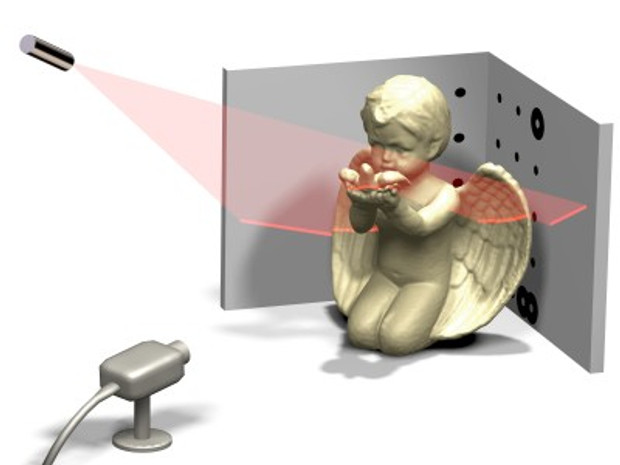 These scanners shoot light pulses, calculating the time of flight for each pulse to create a 3D visualization — or point cloud. They’re commonly used to map terrains, measure real estate, and in architecture and construction.
These scanners shoot light pulses, calculating the time of flight for each pulse to create a 3D visualization — or point cloud. They’re commonly used to map terrains, measure real estate, and in architecture and construction.
Handheld 3D Scanners
Portable and versatile by design, handheld scanners allow you to efficiently and freely scan large objects, narrow spaces, or all the details of a human subject, for example.
Stationary 3D Scanners
Fixed scanners are a solid option if you plan to scan small objects and want the device to do most of the heavy lifting. They generally come with a stand or tripod and turntable. Automated scanning is also typically part of the deal here, with different modes of alignment to choose from.
3D Body Scanners
As the name implies, 3D body scanners are specifically designed to capture a full 3D scan of human bodies.
Towering machines, usually priced in the tens of thousands of dollars, 3D body scanners provide a fast and accurate 3D body scan for various applications, including health, fitness, animation, and more.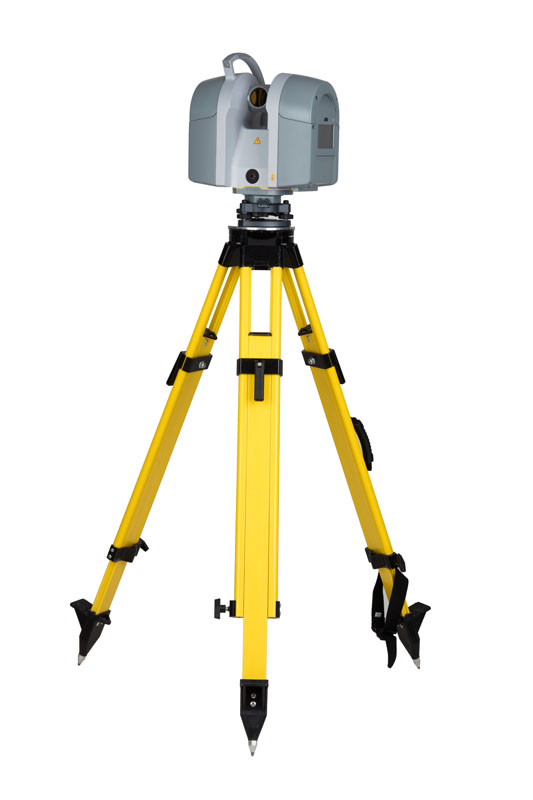
Read more: our feature story on 3D body scanners.
3D Scanner FAQs
Which is the Best 3D Scanner?
For those on a budget, our top pick is the Revopoint POP. It’s versatile, portable, affordable, and offers a solid level of accuracy for the price.
The EinScan H is a solid mid-range option for businesses and professionals looking for fast, highly-accurate printing.
Finally, if you want the best on the market today and have the budget to spare, Scantech’s SIMSCAN and KSCAN or the Artec EVA are all top-shelf options for the most demanding applications.
Who Makes the Best 3D Scanner?
Revopoint with their POP 3D scanner range, along with Creality’s low-cost scanners, make some of the best 3D scanners for hobbyists at home.
Companies like Artec, Shining 3D with their Einscan range, Scantech, and Creaform are known for high-quality commercial scanners.
What Is The Best 3D Scanner For Small Objects?
We recommend a stationary 3D scanner like the BQ Ciclop for affordable home scanning, and the Shining 3D EinScan SP for professional small object scanning.
What Is The Best 3D Scanner For 3D Printing?
We recommend the Creality CR-Scan 01. Creality has made the most of its 3D printing know-how to design a scanner that blends seamlessly into the 3D printing workflow. It’s compact, versatile, and reasonably accurate, perfect for most 3D printing hobby applications.
What Is The Best 3D Scanner For Reverse Engineering?
Scantech’s SIMSCAN rises above the rest as our top choice for reverse engineering. It’s particularly adept at capturing highly-detailed and accurate scans of objects in hard-to-reach spaces, perfect if you’re looking to reverse engineer a part from an aging piece of machinery or antique car, for example.
Laser 3D scanning of premises with a laser, prices for three-dimensional scanning
Laser 3D scanning of premises for various purposes
The GlavGeOSyomka company offers laser scanning services for premises. Our specialists are ready to assist you in the implementation of your ideas of design, decoration, as well as in such delicate and complex works as the restoration and reconstruction of architectural monuments.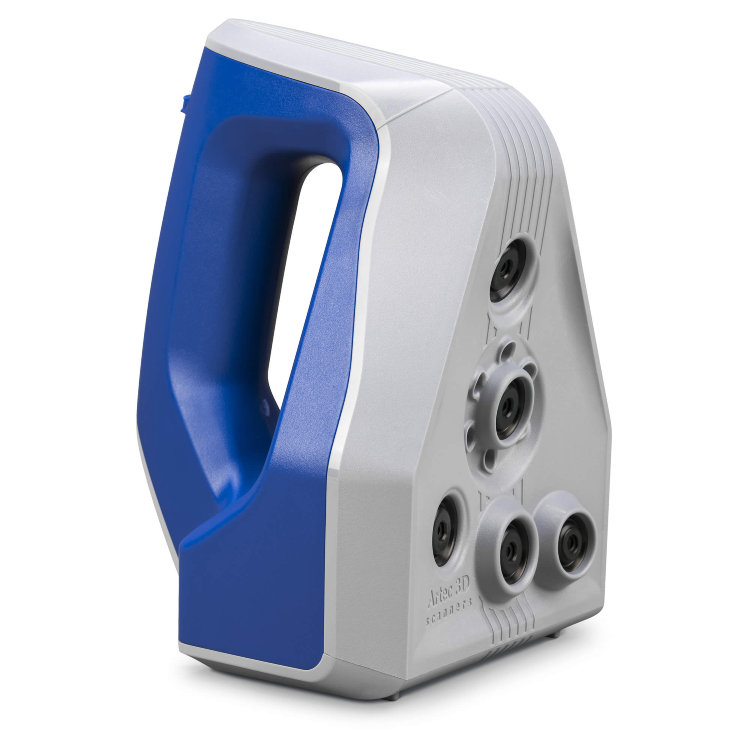 These works will also be indispensable in industrial construction.
These works will also be indispensable in industrial construction.
The basic essence of laser scanning. Laser scanning is a relatively new direction in geodesy. Its appearance is associated with the rapid development of technology, as well as with the desire of a person to automate his work process. For laser scanning, a special device is used - a 3D scanner. The laser rangefinder, rotating 360 degrees, in reflectorless mode with the help of a laser beam, manages to capture all the details within the boundaries of the work specified by the operator. Thus, spatial coordinates in three-dimensional space are determined. The scanner creates a point cloud with a clear structure and density. These parameters are set by the surveyor, and the higher the density of points, the more often the device surveys, and this increases the detail of the survey. The output is a 3D model that can be used for various purposes.
Laser scanning in architecture and design. Laser scanning is especially popular with architects and designers. Imagine a situation where a person orders the design of his apartment. In order to get started, the specialist needs a detailed plan of the premises in which the work will be carried out. But what if the room is not typical, and it is replete with a large number of details? Or do you need the design of an entire apartment or a country house? In this case, a laser surveyor can help. It can take a lot of time and effort to accurately measure and sketch rooms using traditional methods. The scanner will do all the work for you, producing the most detailed 3D model in a matter of hours, which will be extremely convenient to work with in the future. In addition, such a result will be the most visual, and you will be able to demonstrate to the customer any details of the future interior of his choice. For restorers, laser scanning is also an equally important and energy-intensive process. The rooms inside ancient buildings that need to be repaired and recreated in their original form are often rich in various architectural delights.
Imagine a situation where a person orders the design of his apartment. In order to get started, the specialist needs a detailed plan of the premises in which the work will be carried out. But what if the room is not typical, and it is replete with a large number of details? Or do you need the design of an entire apartment or a country house? In this case, a laser surveyor can help. It can take a lot of time and effort to accurately measure and sketch rooms using traditional methods. The scanner will do all the work for you, producing the most detailed 3D model in a matter of hours, which will be extremely convenient to work with in the future. In addition, such a result will be the most visual, and you will be able to demonstrate to the customer any details of the future interior of his choice. For restorers, laser scanning is also an equally important and energy-intensive process. The rooms inside ancient buildings that need to be repaired and recreated in their original form are often rich in various architectural delights.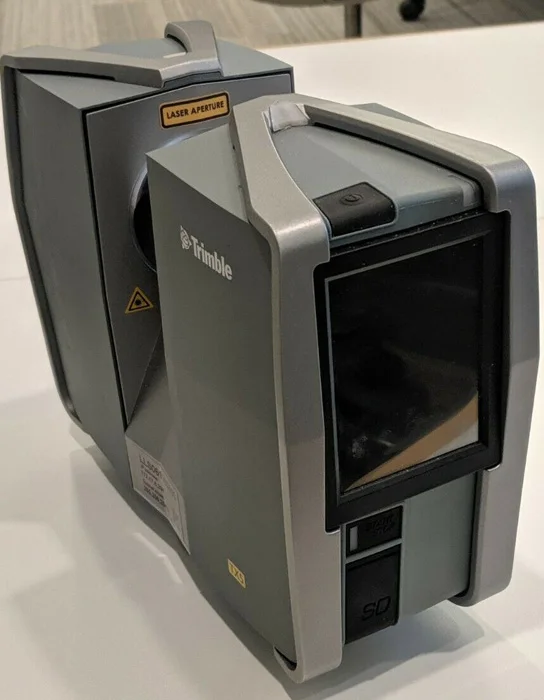 In order to accurately indicate the scope of work and make detailed estimates, a 3D model is essential. This will help to avoid any inaccuracies and miscalculations, especially when it comes to architectural monuments, where every detail is important.
In order to accurately indicate the scope of work and make detailed estimates, a 3D model is essential. This will help to avoid any inaccuracies and miscalculations, especially when it comes to architectural monuments, where every detail is important.
Laser scanning of premises in industry and construction
In conditions of extreme cramped workshops and premises of various plants and factories, a 3D scanner can create a detailed diagram of all units and assemblies, while not taking up much space. When designing, reconstructing or building new structures at industrial facilities, laser scanning is simply irreplaceable. This type of work can significantly save time and reduce labor costs. A point cloud, which will be used to build a three-dimensional projection of all components and assemblies, can be obtained in a few days after the end of the field stage, which will not take much time. While the production of a model created by the usual measurements and sketches can take weeks, moreover, the accuracy will be extremely rough.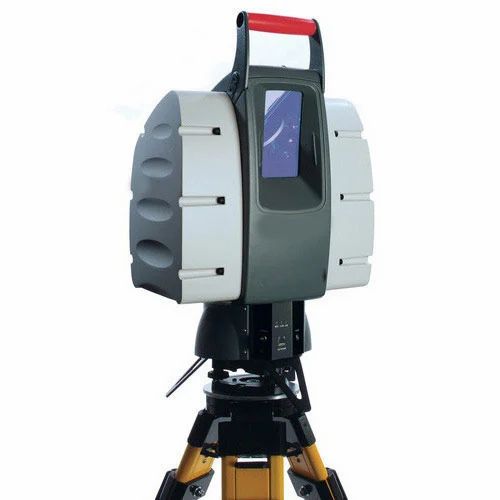 This survey method is most relevant for large industrial premises. Do not forget about the use of laser scanning in construction. It is not always possible to create a detailed plan of a building under construction due to the inaccessibility of serif points or the complexity and laboriousness of laying a tacheometric traverse. In such cases, the use of a scanner will be a way out of this situation. Based on the results of his work, you can get a model, which can then be used in the form of a floor plan.
This survey method is most relevant for large industrial premises. Do not forget about the use of laser scanning in construction. It is not always possible to create a detailed plan of a building under construction due to the inaccessibility of serif points or the complexity and laboriousness of laying a tacheometric traverse. In such cases, the use of a scanner will be a way out of this situation. Based on the results of his work, you can get a model, which can then be used in the form of a floor plan.
Applications and types of laser scanning
So, laser scanning makes it possible to obtain detailed digital models of terrain and structures. But where does it apply and in what cases is it cost-effective? Popular areas are architectural and restoration work, the creation and updating of GIS materials, the digitization of complex engineering and industrial equipment, as well as a number of other tasks. Why is it beneficial to use this technology in such cases? As mentioned earlier, when working with a total station or laser rangefinders, the speed of obtaining data is low - in one working day, a surveyor can take the coordinates of less than 1000 points.
What if the façade of a building, premises or some equipment is replete with a huge number of elements of complex shapes? It is extremely difficult to transfer them in digital form. The laser scanner processes up to 1 million measurements per second, creating a dense point cloud that clearly repeats all contours and lines of any complexity. As a result, the surveyor receives an almost photographic model, which can be conveniently manipulated and all the information can be seen very clearly. This is relevant for those professionals whose work involves precisely such details - restorers, architects, designers, design engineers, inventories. With the help of geodetic data, it is possible to design the repair or installation of new equipment or structures, taking into account all possible factors and risks, as well as to carry out high-quality restoration and renovation work with historical accuracy, having previously calculated the appearance and functional content. The advantage of laser scanning is the possibility of not only static (ground) data processing, but also mobile (the scanner is installed on a moving vehicle) and even aerial (the device is attached to the UAV). This allows you to collect information from a larger area and a larger number of objects, significantly reducing labor costs. Thus, the list of scanning possibilities is extended to obtain digital models of roads, open spaces, power lines, pipelines for various purposes, and much more.
This allows you to collect information from a larger area and a larger number of objects, significantly reducing labor costs. Thus, the list of scanning possibilities is extended to obtain digital models of roads, open spaces, power lines, pipelines for various purposes, and much more.
Three-dimensional modeling based on the results of scanning
The most responsible and complex is the office processing of scanned data. For correct operation, not only high-class specialists are required, but also powerful PCs with pre-installed modern software. After transferring data from the device to the computer, the surveyor must stitch together disparate arrays of points, called clouds or scans. This can be done either by coordinated or numbered marks, fixed in advance on the object, or by characteristic points. It is advisable to use the latter option if the object does not abound with many complex shapes or the number of scans is small, otherwise the probability of an error increases.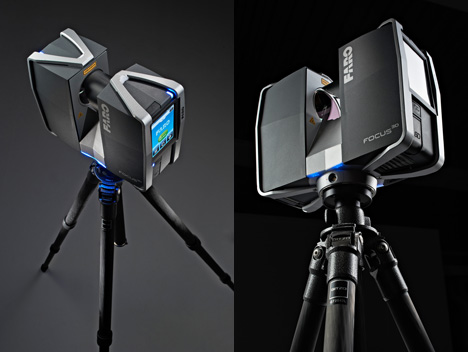 The result is a "raw" model, a workpiece that requires processing. Artifacts are removed from there - foreign objects and points that arose clearly due to a technical error of the scanner. This is more complicated than it seems - a lot of unnecessary information always gets into the "frame", and the surveyor's task is to carefully study the array of points for the presence of such defects. A model freed from artifacts is considered ready, and further post-processing depends on the requirements of the customer. The terms of reference may include the creation of sweeps and sections of specific sections, geometric models by drawing the contours of equipment and structures with primitives, and even the imposition of photographic materials on a 3D model to increase visual clarity. What is beneficial for such products is relevance and detail. Often there is a situation when the available materials do not reflect reality - something is not taken into account, changes were not made at the time of modernization, or the data is simply erroneous.
The result is a "raw" model, a workpiece that requires processing. Artifacts are removed from there - foreign objects and points that arose clearly due to a technical error of the scanner. This is more complicated than it seems - a lot of unnecessary information always gets into the "frame", and the surveyor's task is to carefully study the array of points for the presence of such defects. A model freed from artifacts is considered ready, and further post-processing depends on the requirements of the customer. The terms of reference may include the creation of sweeps and sections of specific sections, geometric models by drawing the contours of equipment and structures with primitives, and even the imposition of photographic materials on a 3D model to increase visual clarity. What is beneficial for such products is relevance and detail. Often there is a situation when the available materials do not reflect reality - something is not taken into account, changes were not made at the time of modernization, or the data is simply erroneous.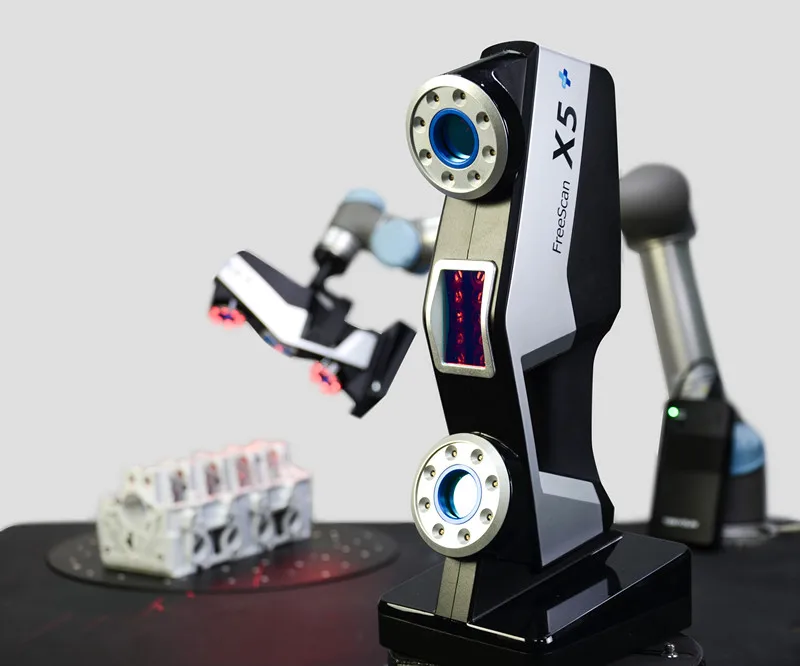 A spatial model obtained in the shortest possible time will help to update the information, and we can talk about both a small room, a specific node or part of the facade, or an entire factory complex, a park and palace ensemble, or an extended line of power lines. That is, laser scanning is not just automatic data processing using a modern device. This is also the painstaking work of professional surveyors at the office stage, which will result in a clear digital model applicable not only for visual, but even for metrological and deformation monitoring. Any mistake can be very expensive, so it is important to entrust this process to the masters of our company - we will carry out all the work in full and with maximum accuracy so that the final product will satisfy all your requests.
A spatial model obtained in the shortest possible time will help to update the information, and we can talk about both a small room, a specific node or part of the facade, or an entire factory complex, a park and palace ensemble, or an extended line of power lines. That is, laser scanning is not just automatic data processing using a modern device. This is also the painstaking work of professional surveyors at the office stage, which will result in a clear digital model applicable not only for visual, but even for metrological and deformation monitoring. Any mistake can be very expensive, so it is important to entrust this process to the masters of our company - we will carry out all the work in full and with maximum accuracy so that the final product will satisfy all your requests.
Scanform - professional handheld 3D scanners
Our clients
See all3
Well Technology Company
Manufacture of industrial ventilation equipment
Well Technology
FENDERIST — Vladivostok
Development and production of tuning parts
fenderist. com
com
BoatService – Croatia
Boatservice Group — A network of yacht service shops operating in Croatia, Slovenia and Montenegro since 2008. Perform almost…
boatservice.eu
Bratuhin Customs - Izhevsk
Production of individual motorcycles and components: 3d scanning, reverse engineering, production and installation of side trailers…
bratukhincustom.com
Physics Racing - St. Petersburg
Petersburg
Quality construction, repair and maintenance of sports cars. Professional approach to work, preparation for exhibitions and competitions…
fizikaracing.vsite.biz
RMM manufacturing — Novosibirsk
Manufacture of downpipes and exhaust systems for Mercedes, BMW, Porsche, Audi, Aston Martin, McLaren, etc.
CAD Engineer
Affordable 3D scanning and CAD design services in Florida, US
facebook.com
KMZ - St.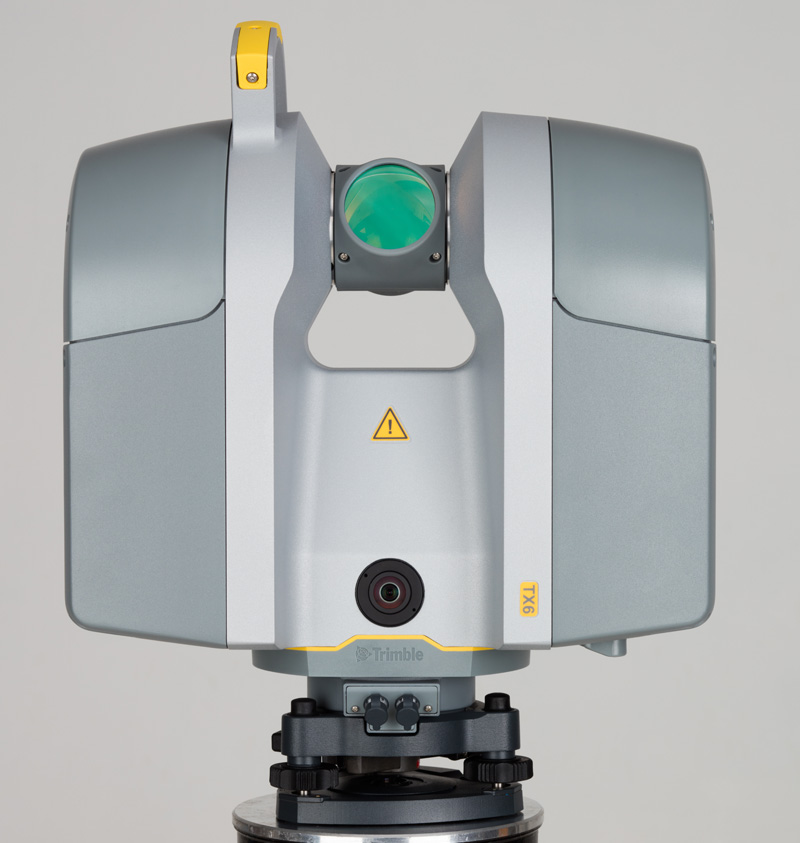 Petersburg
Petersburg
Kingisepp Engineering Plant - a domestic manufacturer of diesel, heat exchange and deck equipment
kmz1.ru
DirTire - Vladivostok
Manufacturing, engine swaps, design, CNC laser cutting, welding, custom work, 3d scanning, 3d printing.
4
"Sport brake systems" - JBT
CTC (Sports Brake Systems) is an official dealer of high-tech JBT brake systems that provide significant .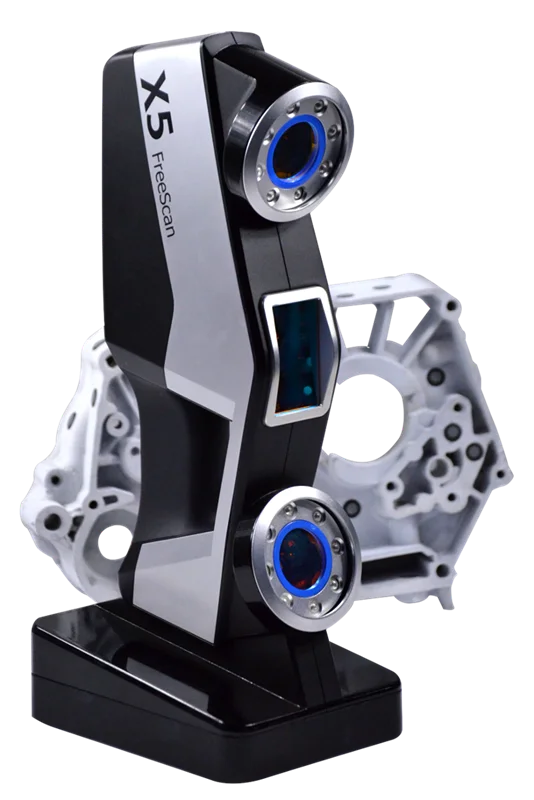 ..
..
View photo report
4
LLC "TAURUS" - Istra
LLC "Taurus" provides services for clearing land from unwanted trees and shrubs using mulchers.
View photo report
mulcher-taurus.ru
3
Steffi Group - Rostov-on-Don
The company specializes in laser cutting, marking, CNC metal processing, CNC tube and bar bending.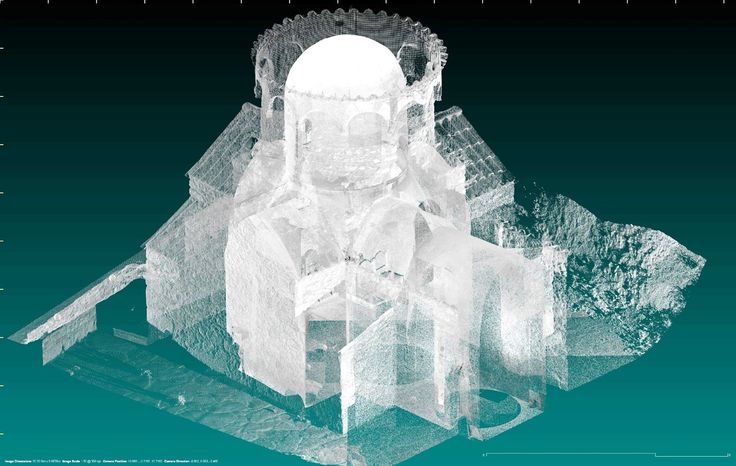 3D modeling, scanning…
3D modeling, scanning…
See photo report
cnc-services.ru
14
SWAP POINT
The company specializes in engine swaps and vehicle modifications. As the guys say about themselves: “We swap everything that moves, and what ..
See photo report
youtube.com/Swap
5
SVS-Sochi
Russian company for the development and production of tuning components for cars of any class with its own unique design.
See photo report
5
Magic Print
3D printing, 3D scanning, design and modeling in Chechnya
See photo report
6
3D-Cartel — St. Petersburg
3D-Cartel offer a range of services for: 3D scanning, 3D printing, Modeling, Reverse engineering, wax casting and aluminum casting
See photo report
6
Box 3D - Moscow
Specialize in 3D printing: large-scale objects, engineering composites, 3D scanning, modeling, design
View photo report
box3d.





